Pheasant Saltimbocca with Basil Pesto Gnocchi
Go back to all recipesI have a little herb garden that sits under a window in the backyard, it's roughly 2 feet by 4 feet. I was hesitant about putting it in the backyard because it doesn't get a lot of sun. The trees block the morning sun, and the house blocks the afternoon sun, allowing it to only get direct sunlight in the middle of the afternoon. We planted Basil in it last year, with no expectation that it would grow, but it did, and it flourished! We had more Basil than we knew what to do with. We made lots of Pesto, then my wife preserved what she could with Salt and Olive oil in mason jars. This year we decided to try planting it with a few other herbs, Thyme, Oregano, Rosemary, Sage, and Parsley, along with more Basil. The Basil came up strong and took over, we have these big, healthy looking Basil plants and very little of anything else. I do however have these two lonely sage plants, towering out of a sea of Basil. Everything else we planted in this herb garden, showed up briefly, then disappeared. I don't know if we didn't water it enough, or it the Basil just choked everything else out.
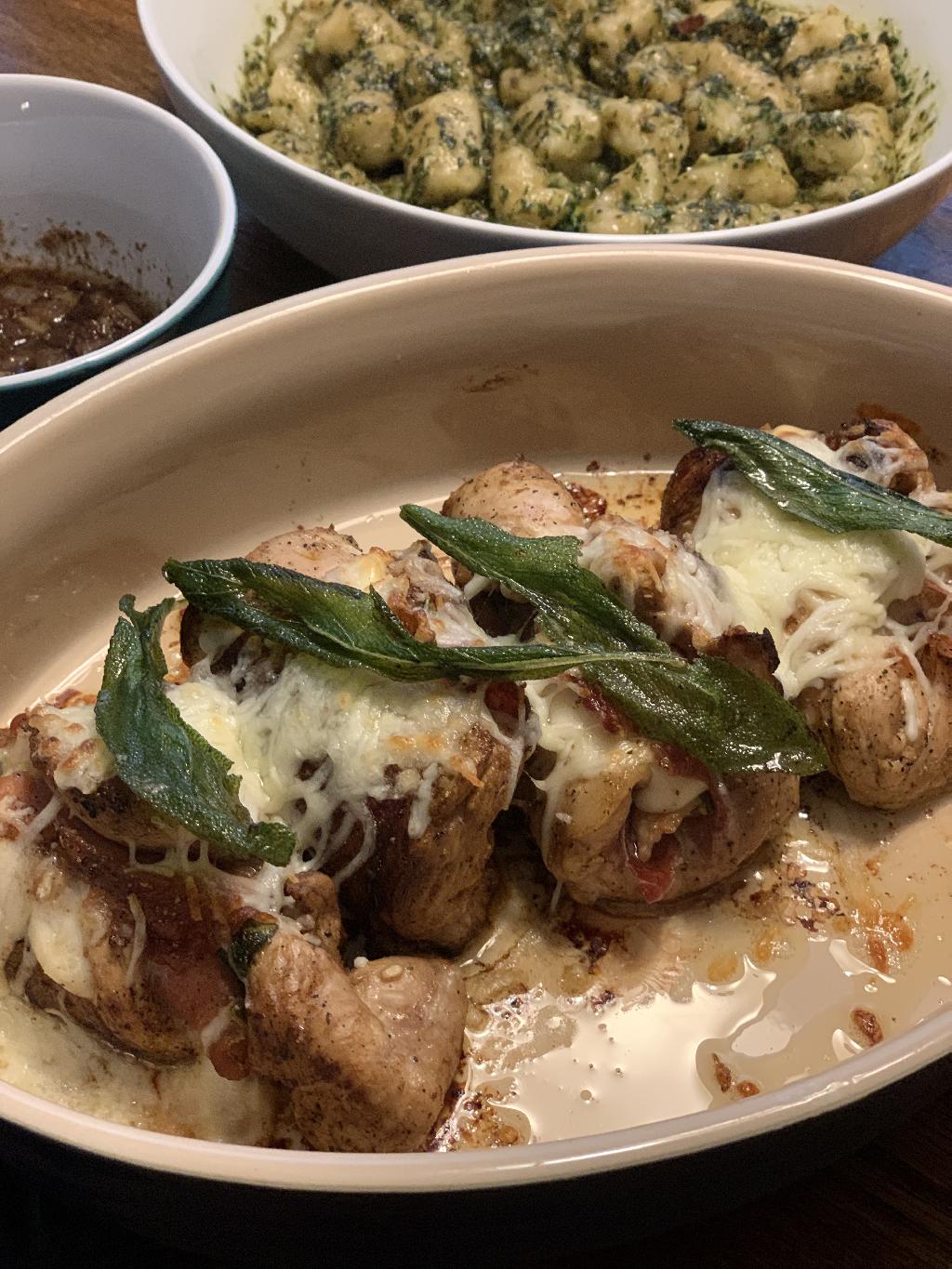
I wanted to find something I could cook with these lonely sage plants, what I came up with is this Saltimbocca. Actually, I did two version of it, one was this Pheasant Saltimbocca and the other is a Quail Saltimbocca, which I'll post later. Saltimbocca is a piece of meat (typically veal), pounded flat, then rounded up with prosciutto and sage. It's then pan fried, then cooked in a marinated of white wine and butter. I tried to stay true to that definition with this recipe, although I added Mozzarella cheese to mine.
This was a very tasty recipe that's simply to make. You'll lightly pound the Pheasant breast with a mallet. You don't have to put a lot of effort into this, over pounding or trying to get it to thin, we tear up the delicate pheasant meat. You just need to work it until it's somewhere between a quarter and a half of an inch thick. Once you have it semi flat, place the breast meat skin side down and place a slice of prosciutto on top of it, then tear off a thin slice of Mozzarella cheese and place it on top of Prosciutto, or sprinkle the cheese if you have shredded, finally top off the whole thing with a sage leaf. Start at one end and just roll it up, like a croissant roll, once it's rolled up, just stick a few toothpicks through it to hold it in place. After cooking, do not forget to remove the toothpicks!! Heat up butter in a skillet, once it's hot, drop a few spare sage leaves in the butter and let it fry until crispy, then remove them to a plate. This will help flavor the oil, plus give us crispy sage to garnish the dish with. Add the pheasant breast to the skillet and lightly brown, rolling around in the butter until all sides are brown. At this point, I choose to move them to an oven safe pan and finish them off in the oven, using the hot skillet and brown bits in the bottom of it, to make my sauce. Technically, or traditionally you should cook the meat in the sauce not in the oven, but I choose not to do that here.
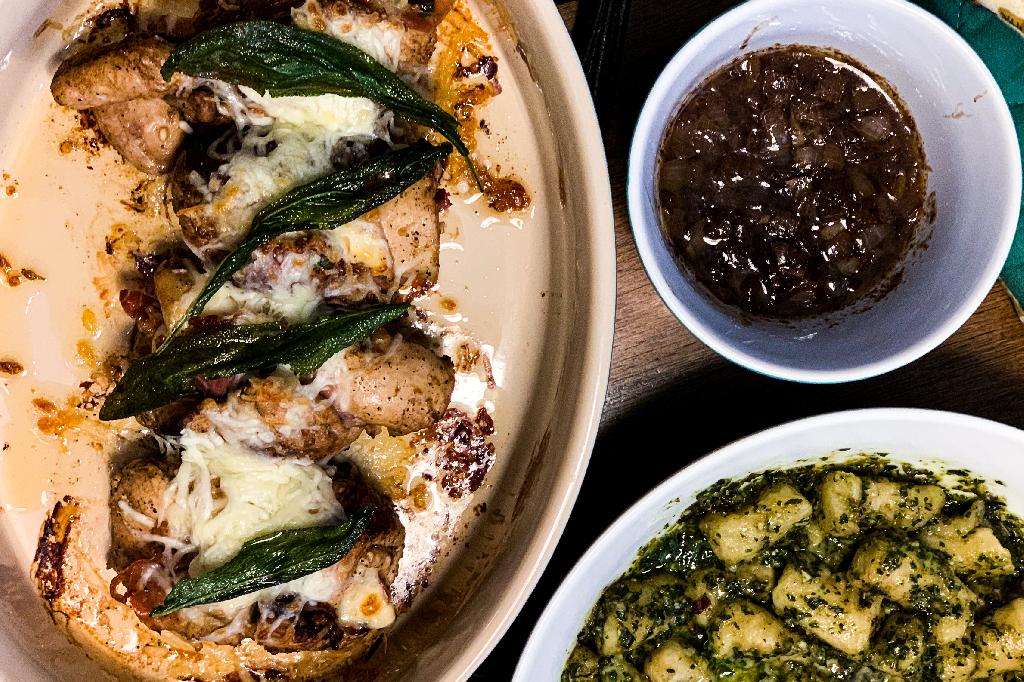 I also used the Basil growing with the sage to make a pesto to use in Basil Pesto Gnocchi. I made my own Gnocchi here and will include instructions on how I made it, but you can save time by using store bought Gnocchi if you want to try this recipe.
I also used the Basil growing with the sage to make a pesto to use in Basil Pesto Gnocchi. I made my own Gnocchi here and will include instructions on how I made it, but you can save time by using store bought Gnocchi if you want to try this recipe.
Ingredients
Pheasant Marinade
Pheasant Saltimbocca
Basil Pesto
Potato Gnocchi
Instructions
Pheasant Marinade
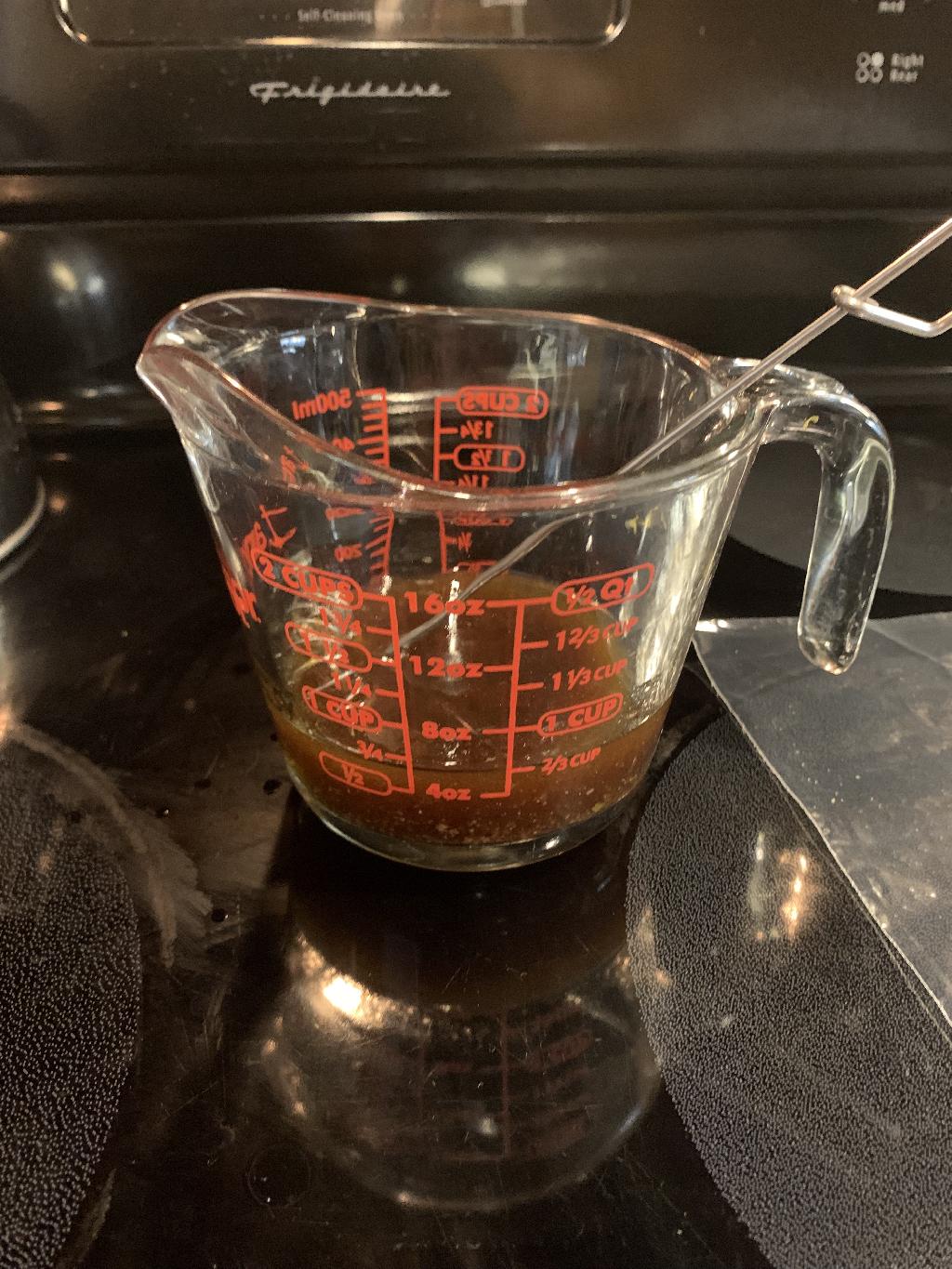
Step #1 Combine all the ingredients in a measuring cup. whisking to combine.
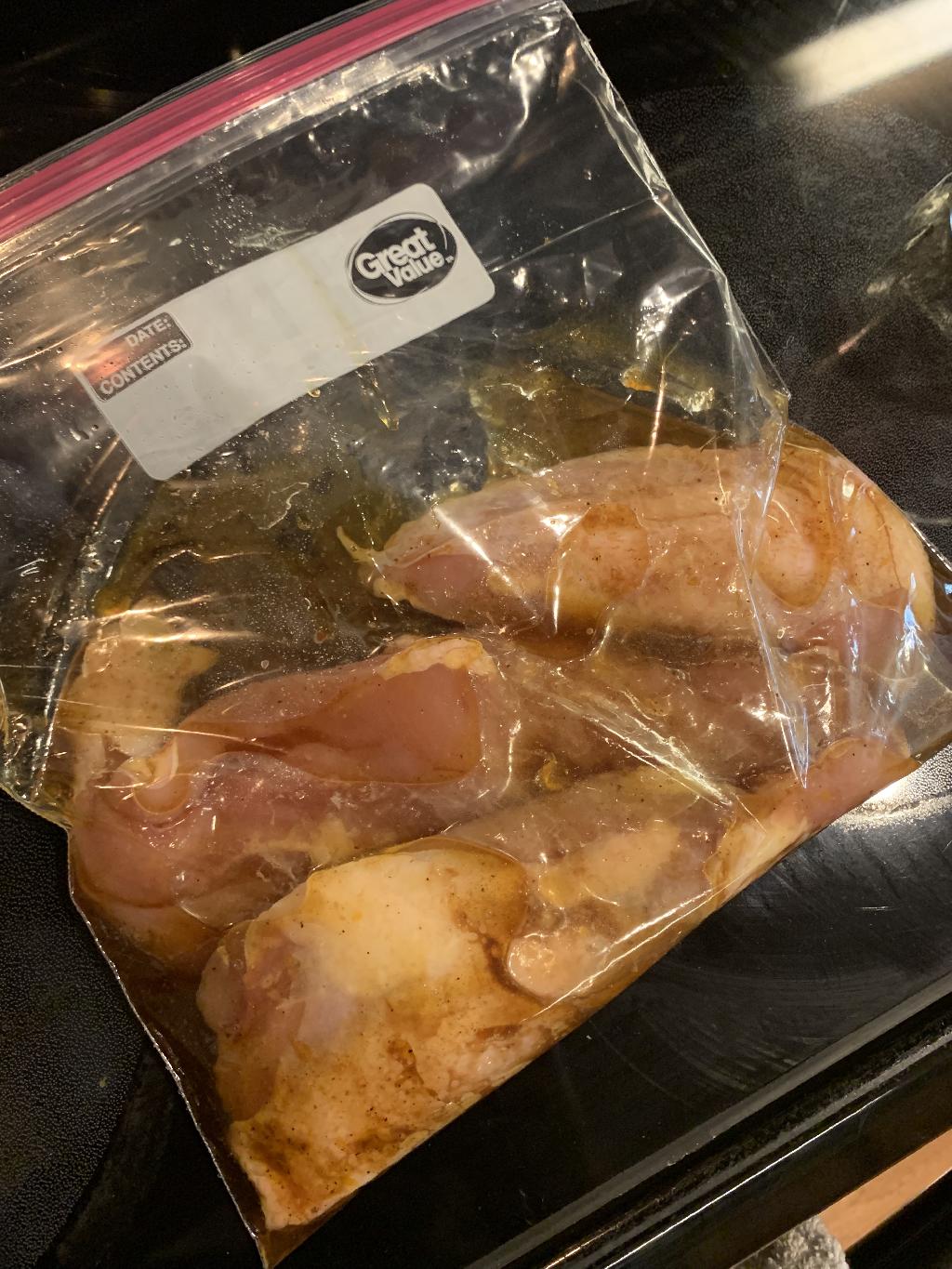
Step #2 Add Pheasant and place in the refrigerator for 2-4 hours.
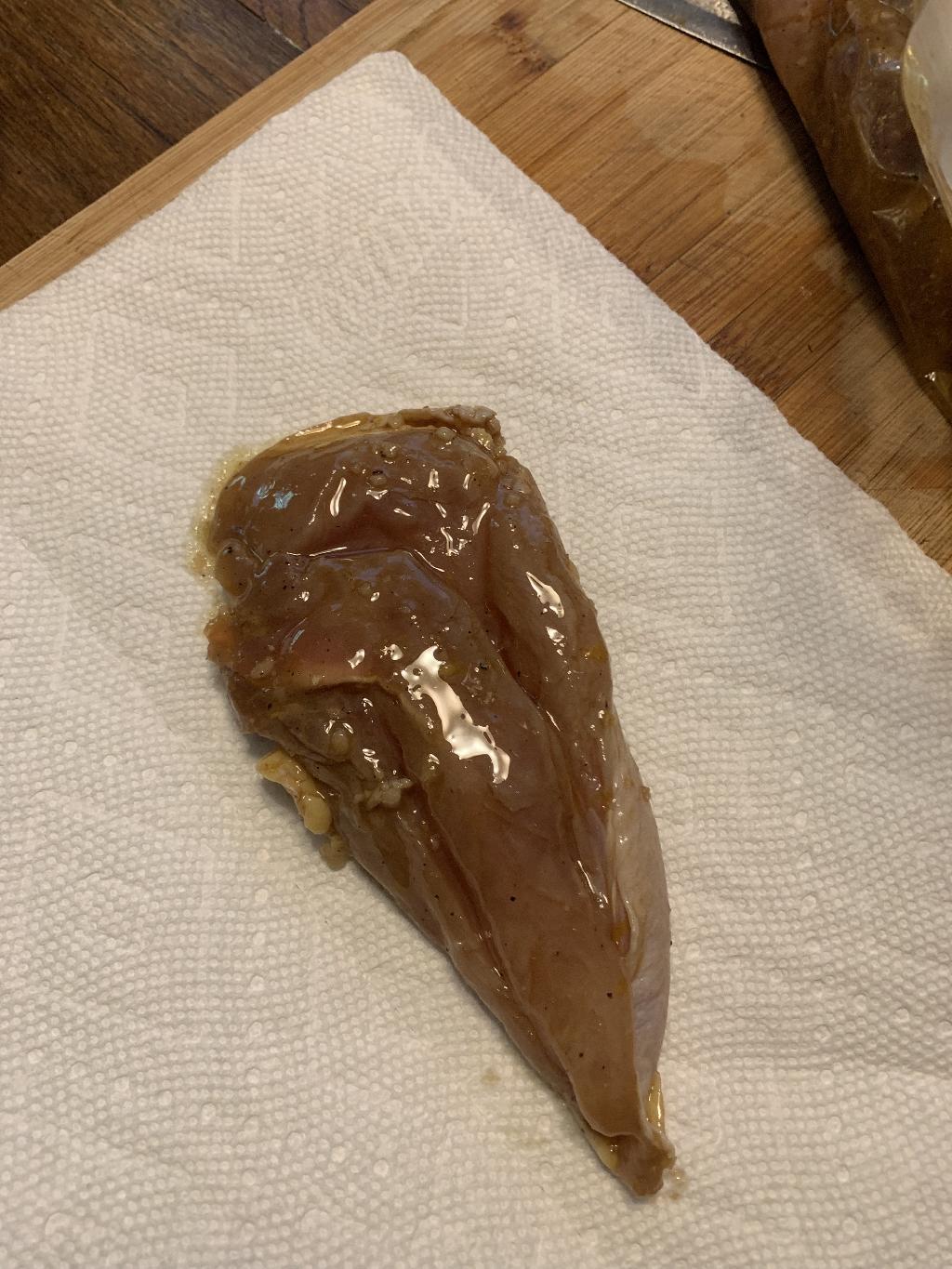
Step #3 When done, remove from refrigerator and place on paper towels.
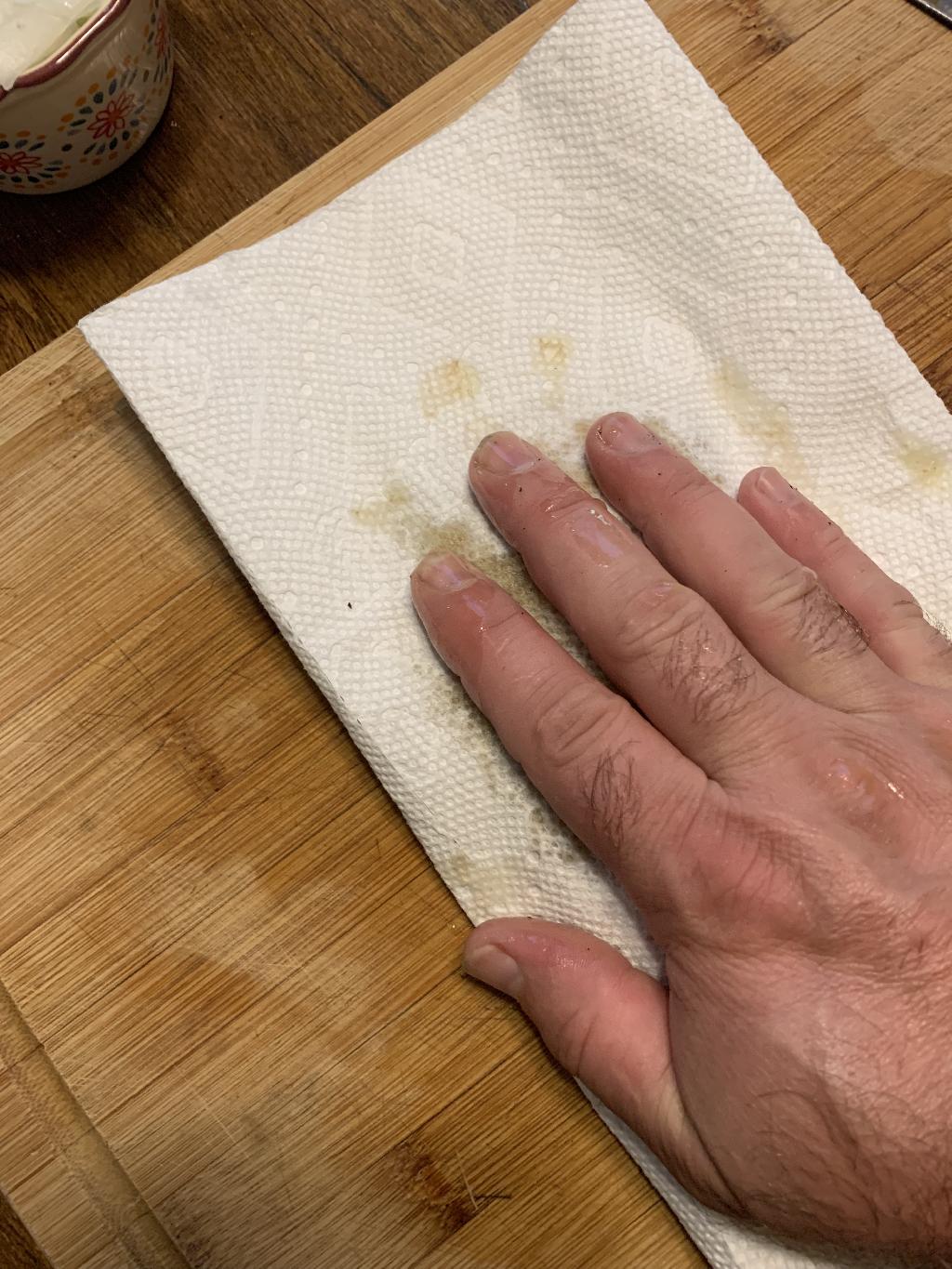
Step #4 Pat dry with paper towels.
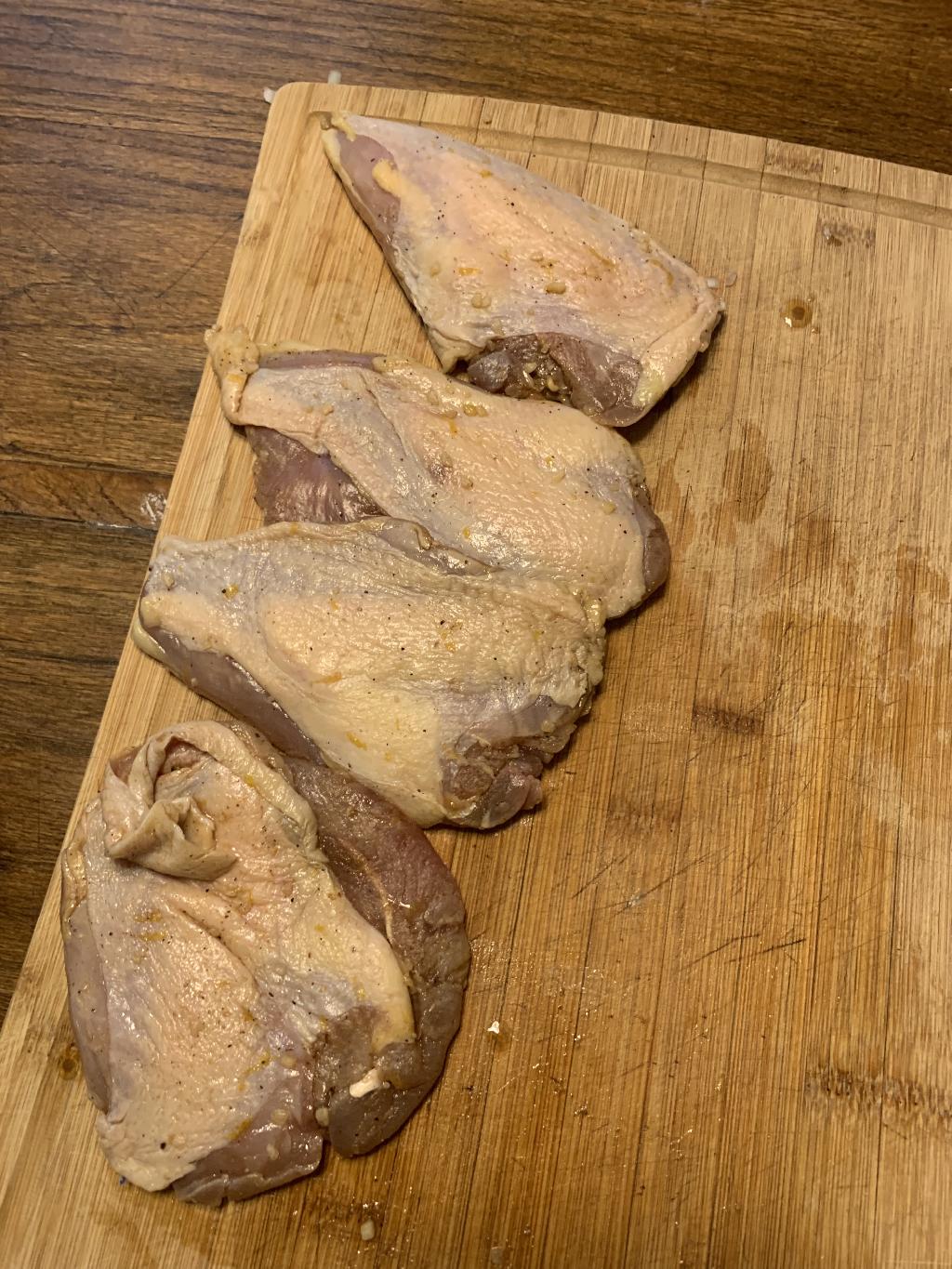
Step #5 We need to skin to be dry, so it gets crispy while it cooks.
Pheasant Saltimbocca
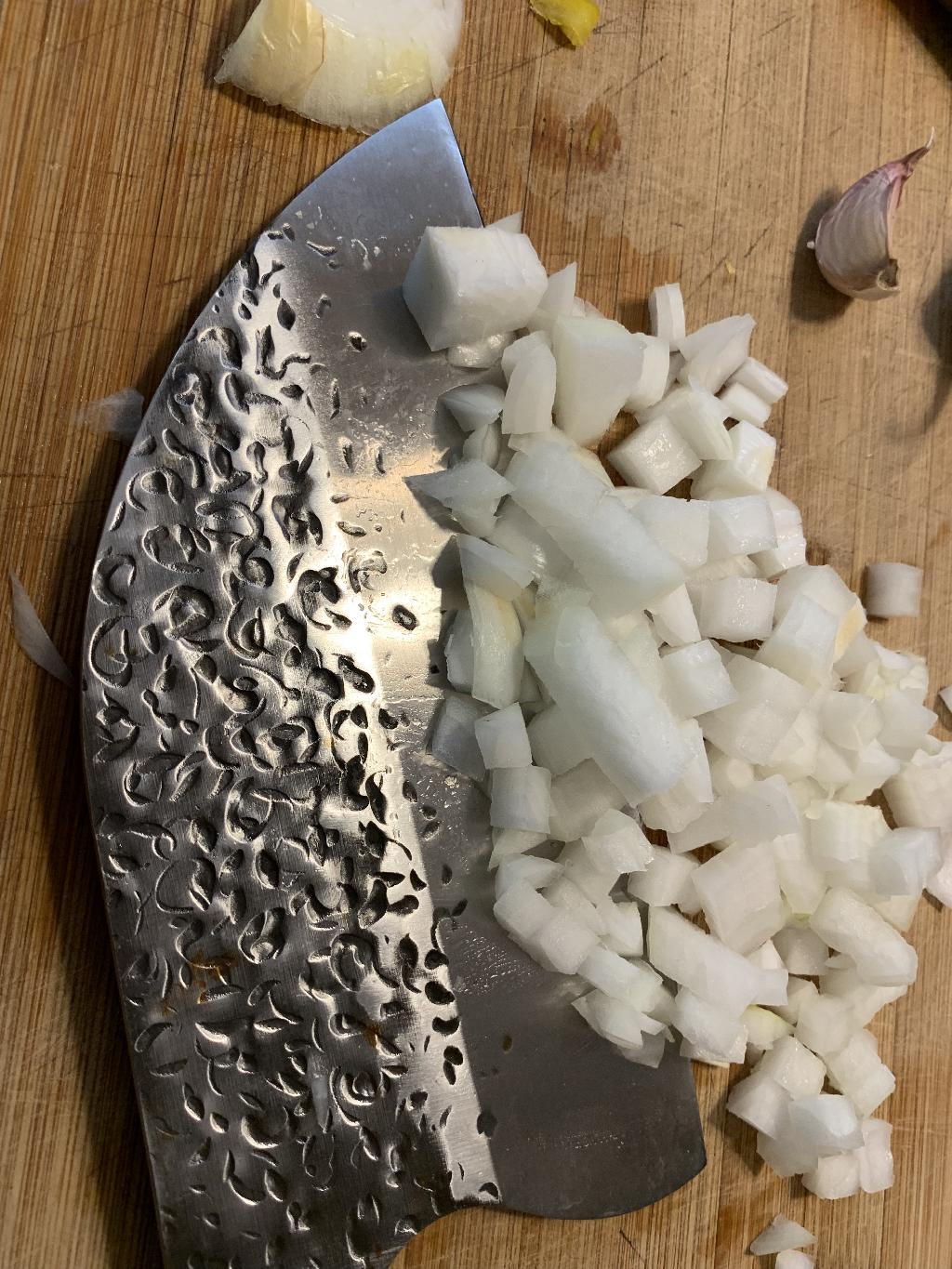
Step #1 Preheat the oven to 350 degrees. Dice onion and measure out other ingredients, so they are ready to go.
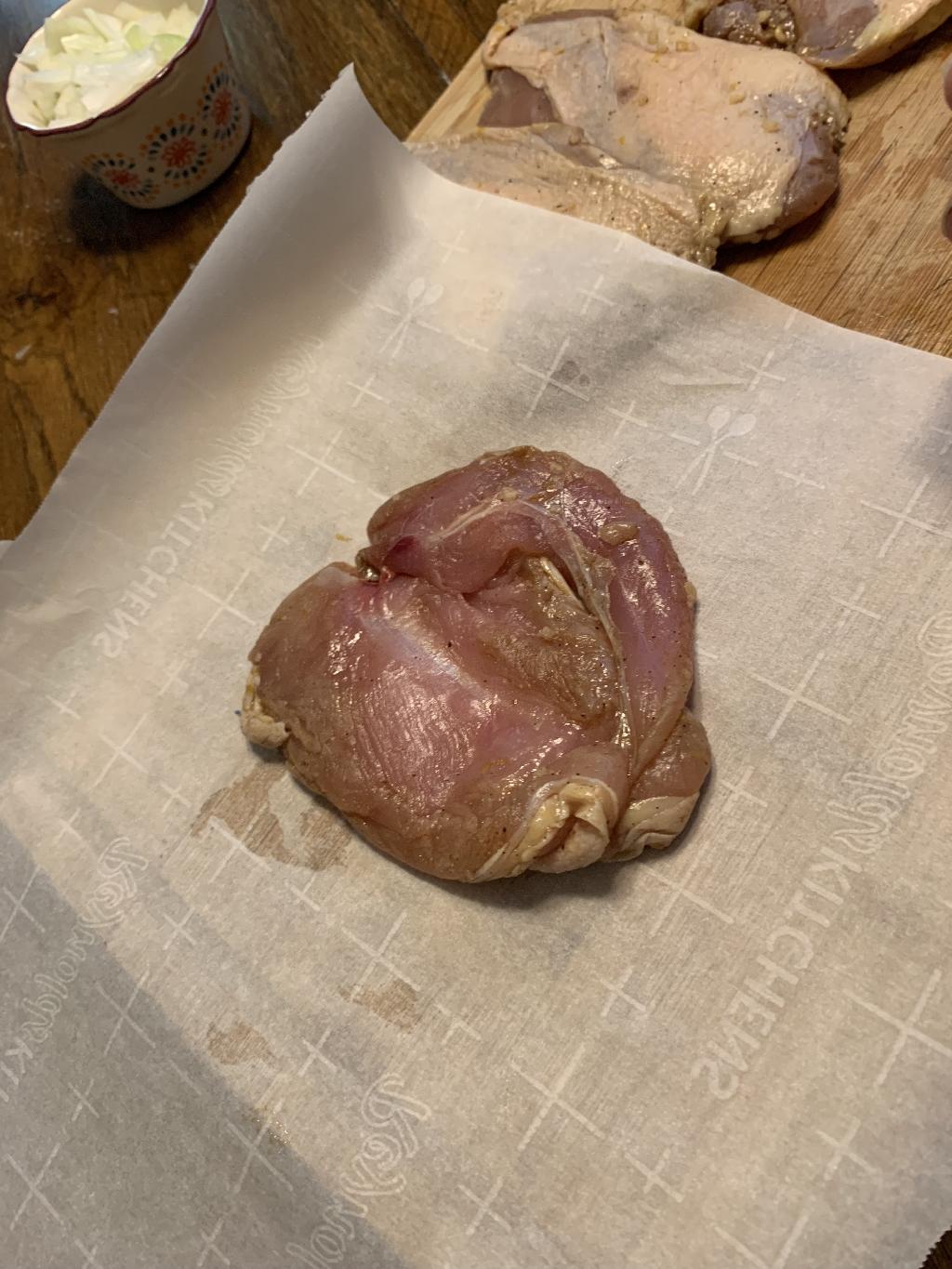
Step #2 Place Pheasant breast skin side down on cutting board and cover with plastic wrap or parchment paper.
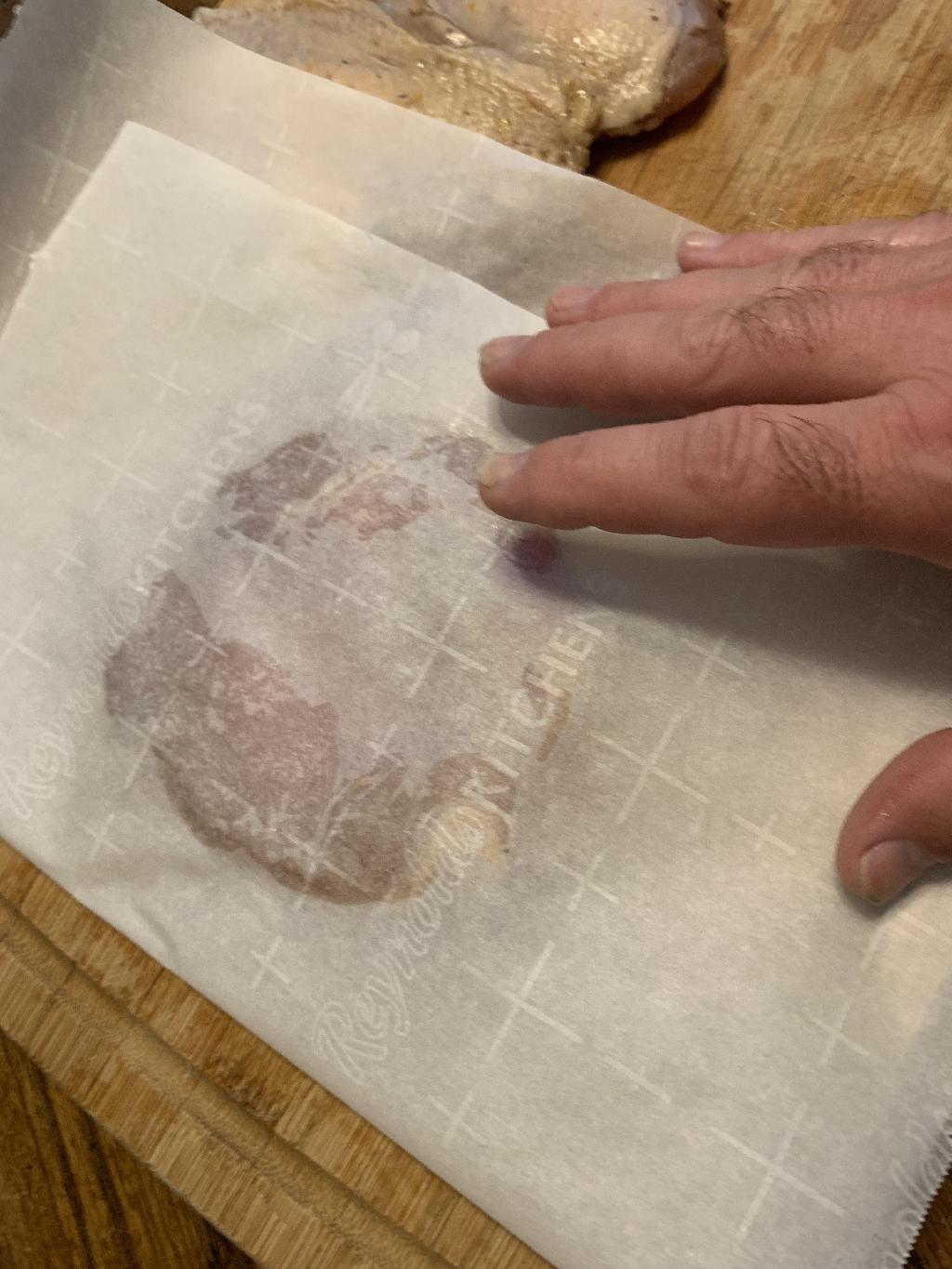
Step #3 Fold the parchment paper over on itself, so that it covers the Pheasant Breast.
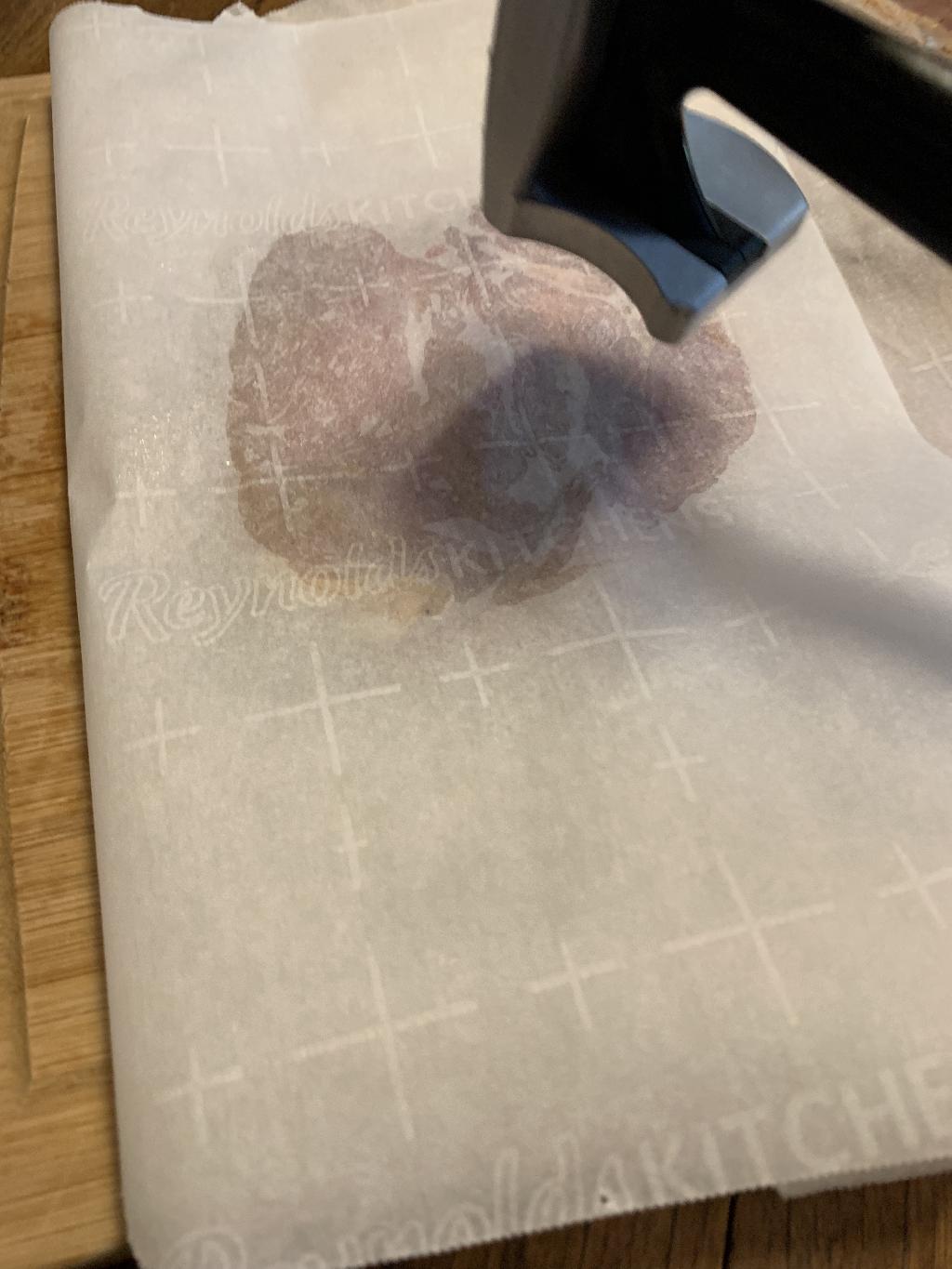
Step #4 Lightly pound breast meat with mallet. It doesn't need to be super thin.
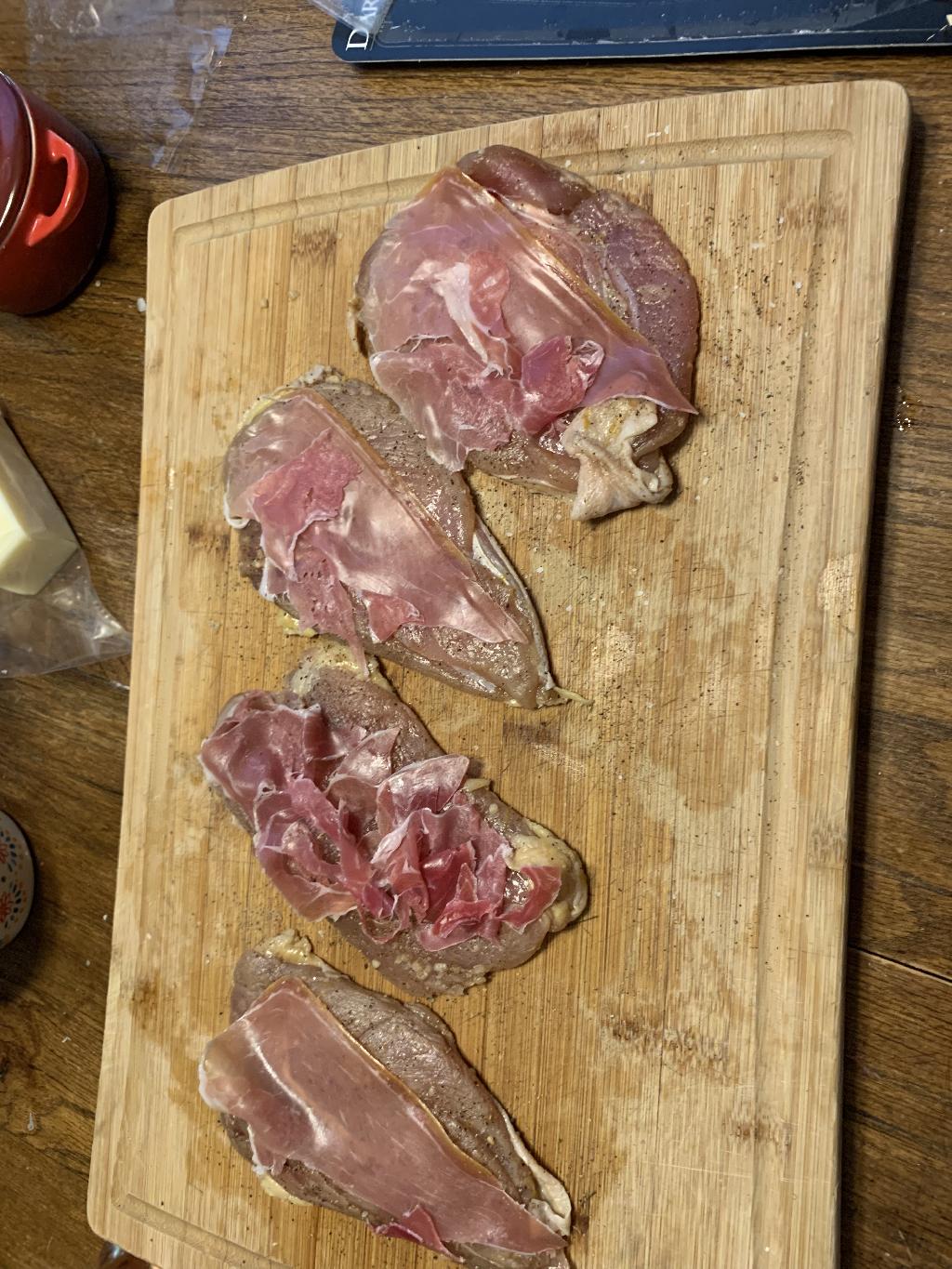
Step #5 When each piece of Pheasant if pounded flat, place one piece of Prosciutto over top of each piece of breast meat.
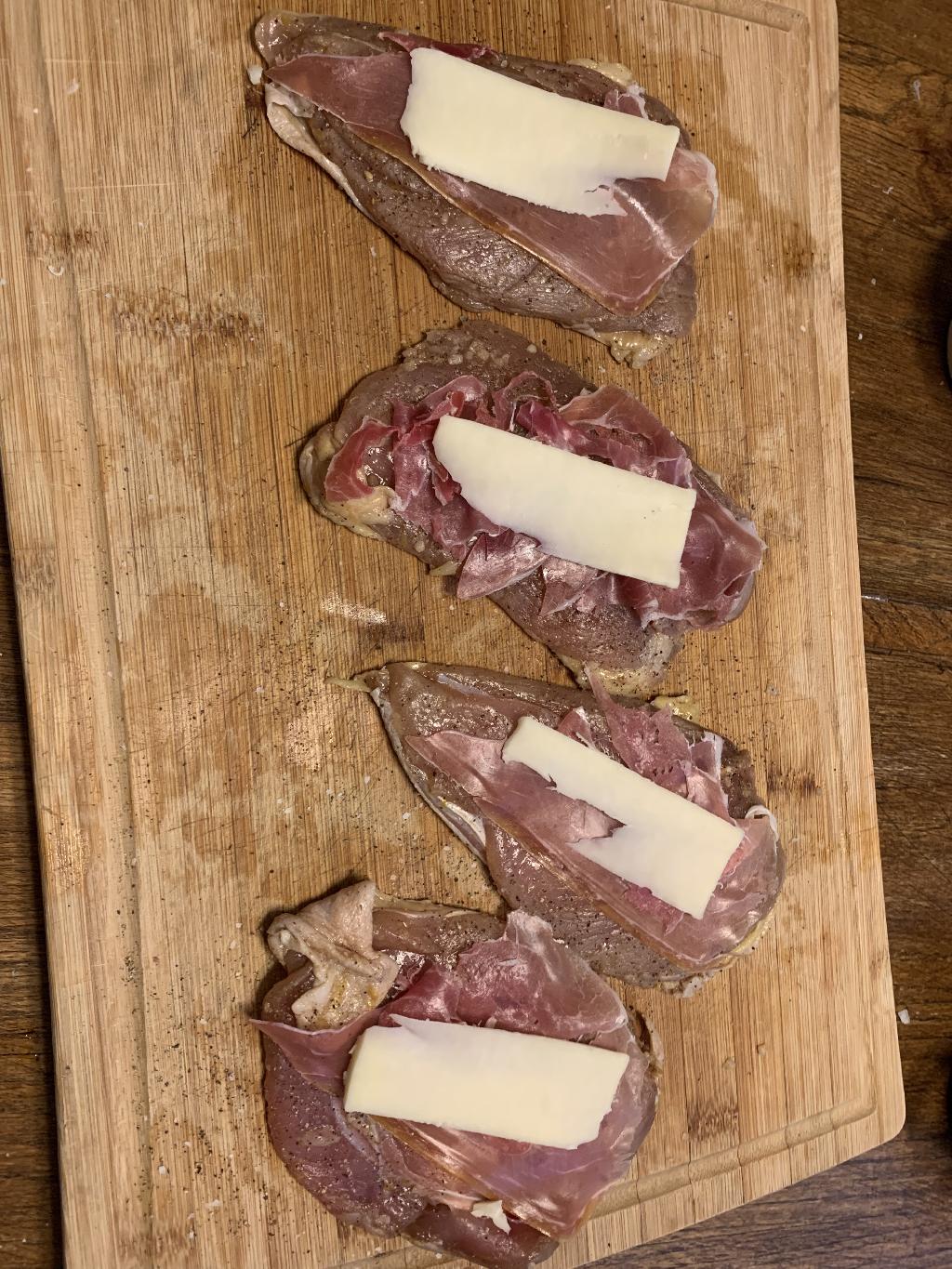
Step #6 Place small strip of Mozzarella Cheese over top of Prosciutto
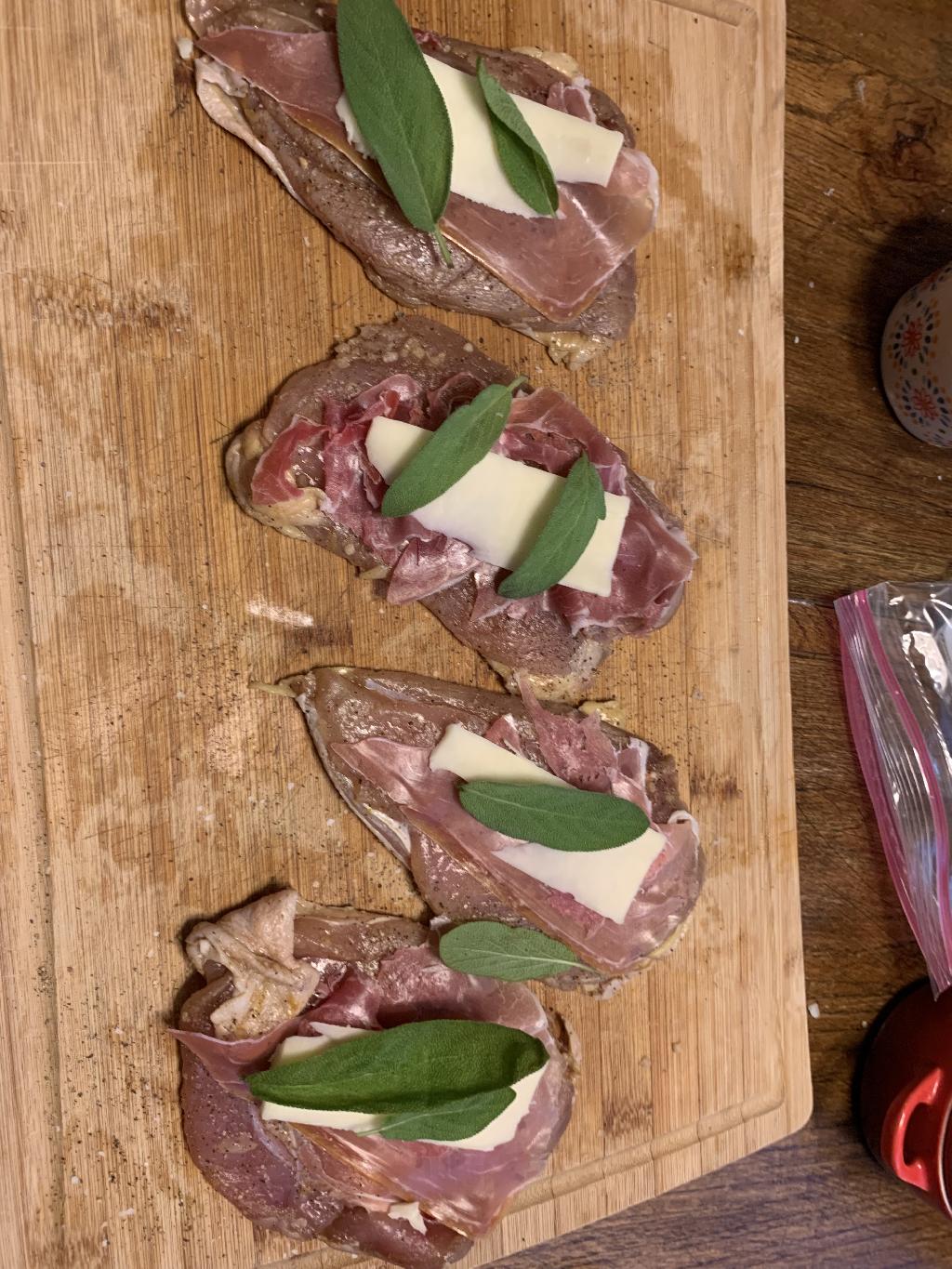
Step #7 Place two sage leaves on top of Mozzarella
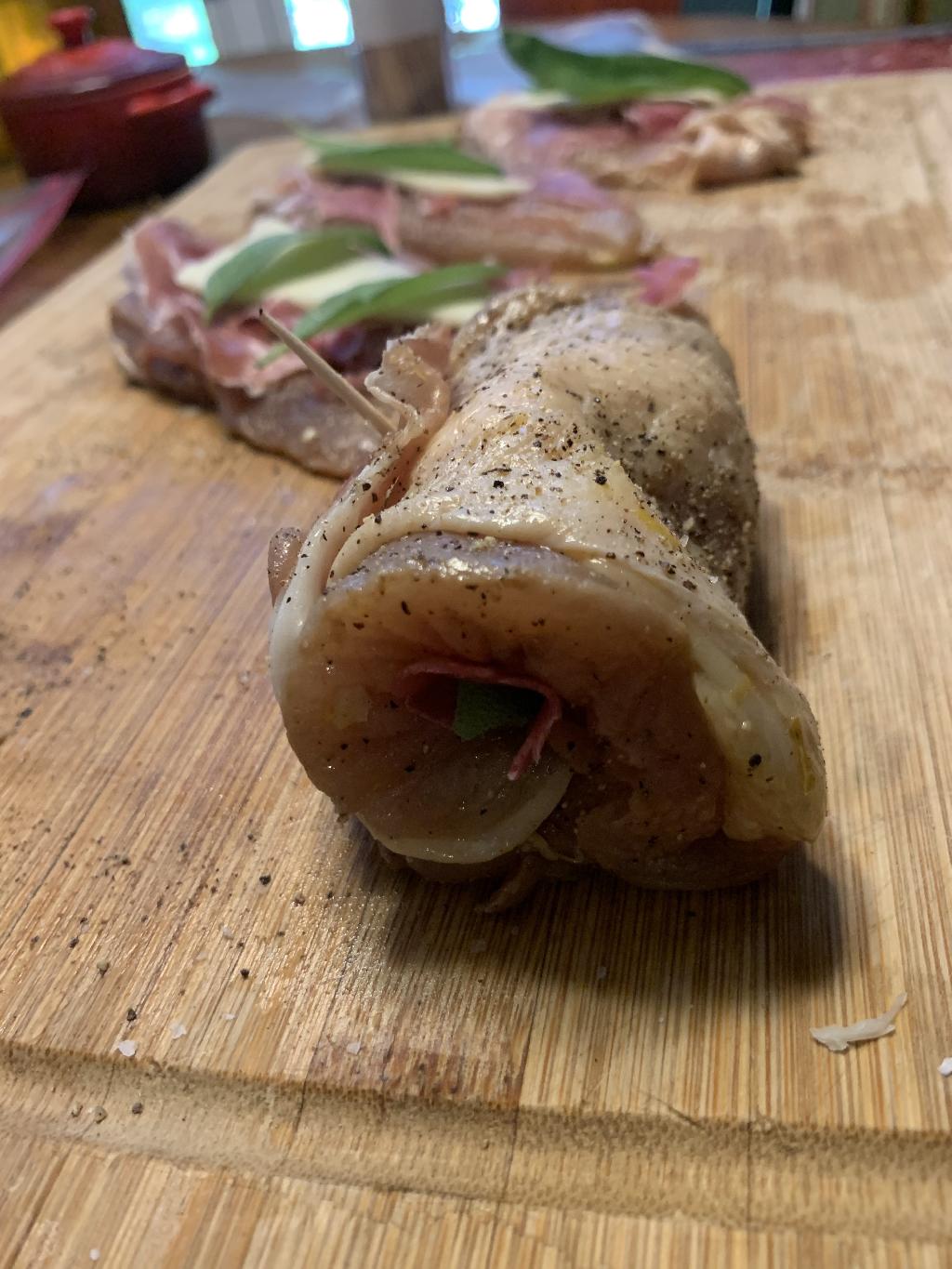
Step #8 Roll the pheasant into a cigar type shape and stick a toothpick through it to hold it together.
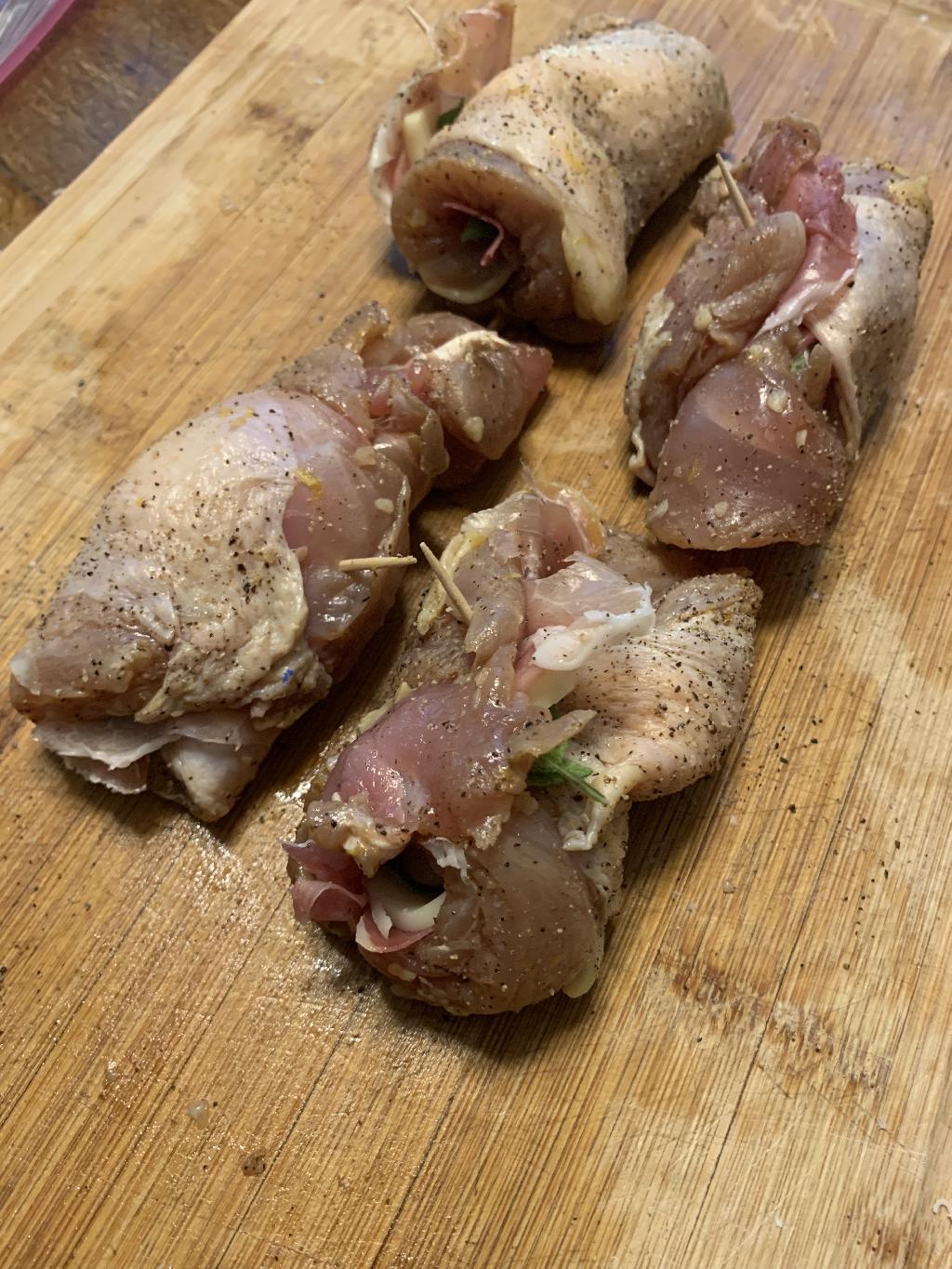
Step #9 When all are rolled up, season with salt and pepper.
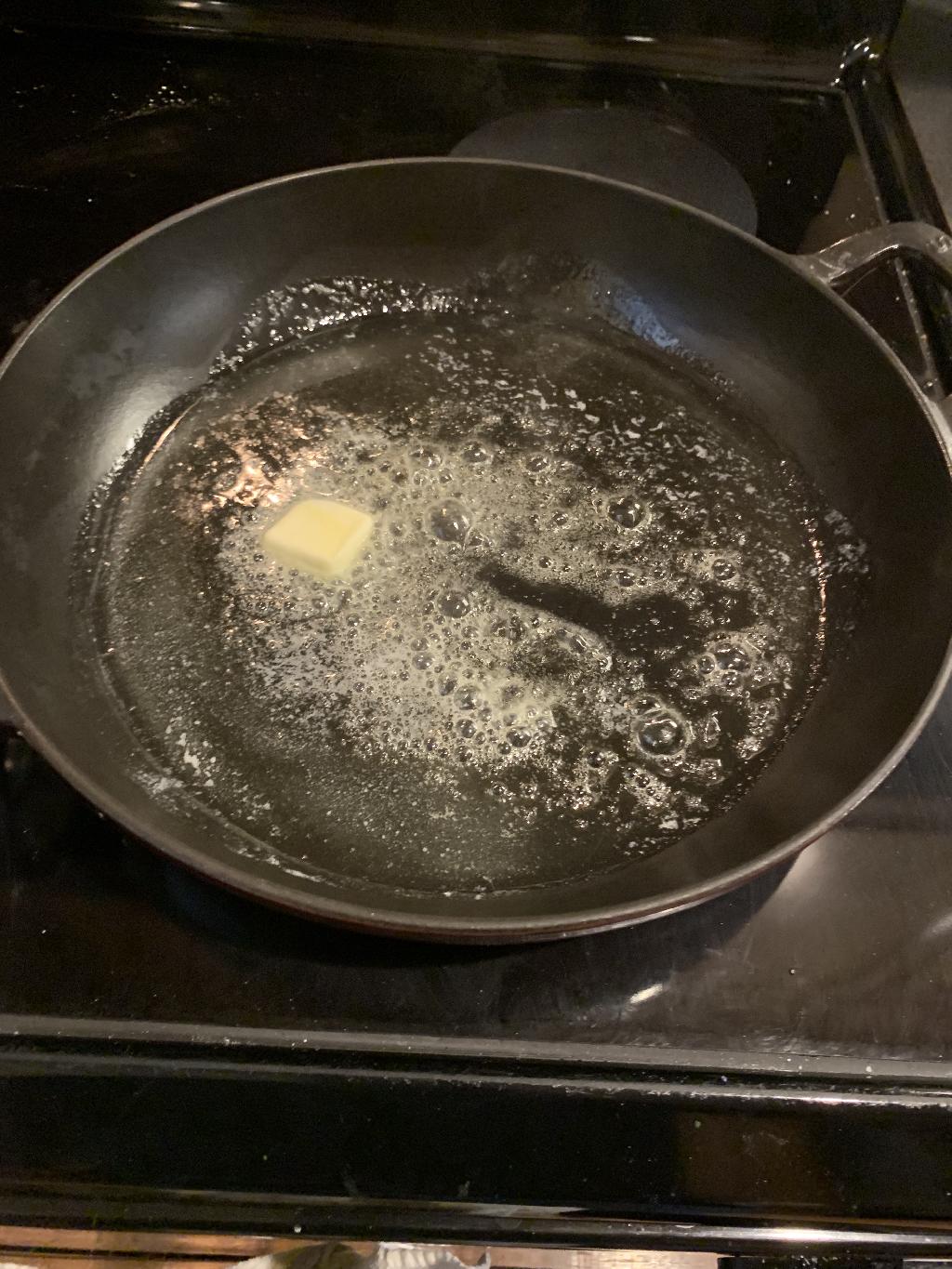
Step #10 Add 2 tablespoons of butter and 1 tablespoon of olive oil to skillet and set heat to medium high.
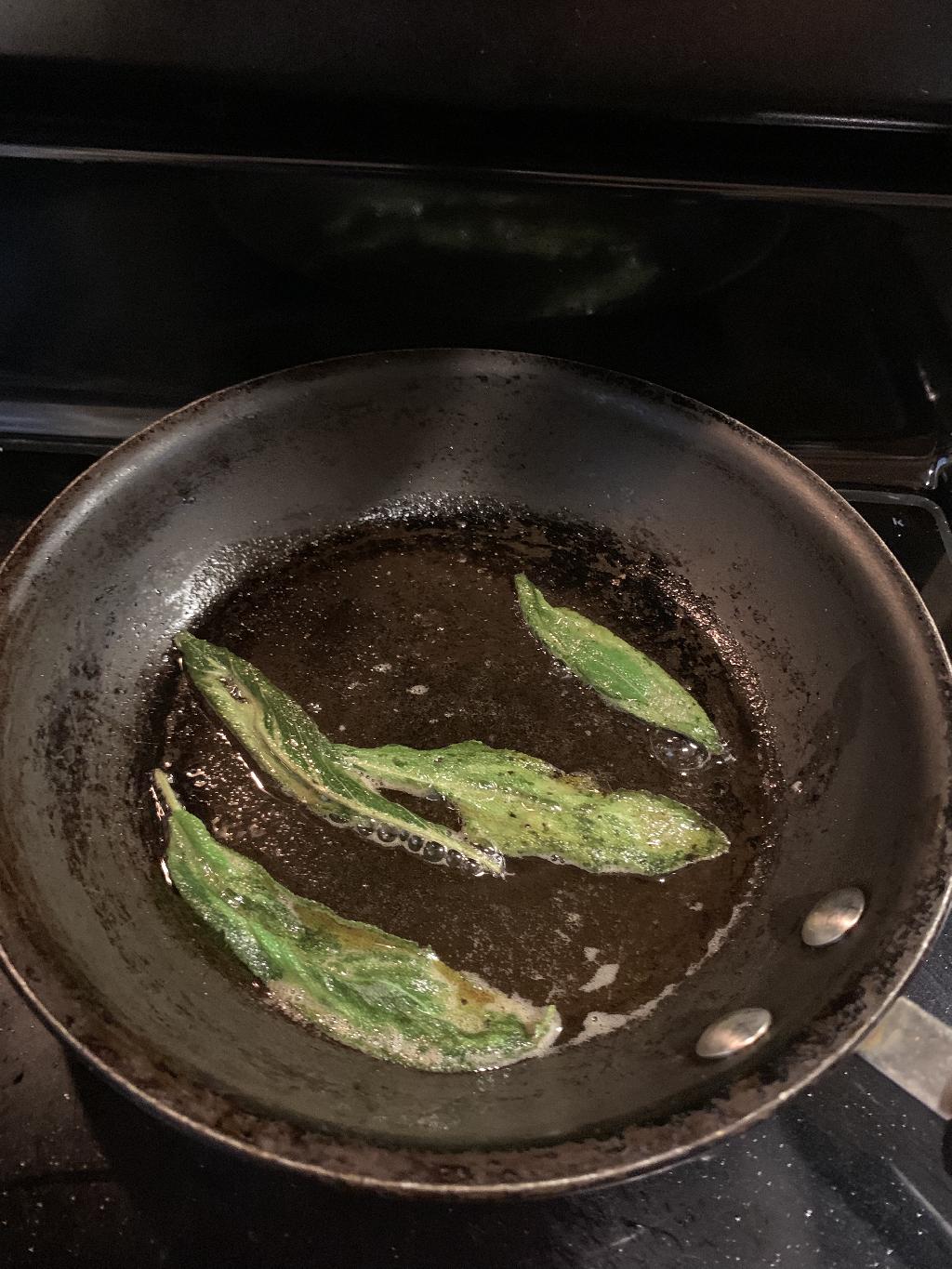
Step #11 Allow pan to get hot, before adding 4 fresh sage leaves to hot oil. When the sage leaves get crispy, then remove to plate. This will help infuse our oil with sage and we'll use the fried sage leaves as a garnish when pheasant is done.
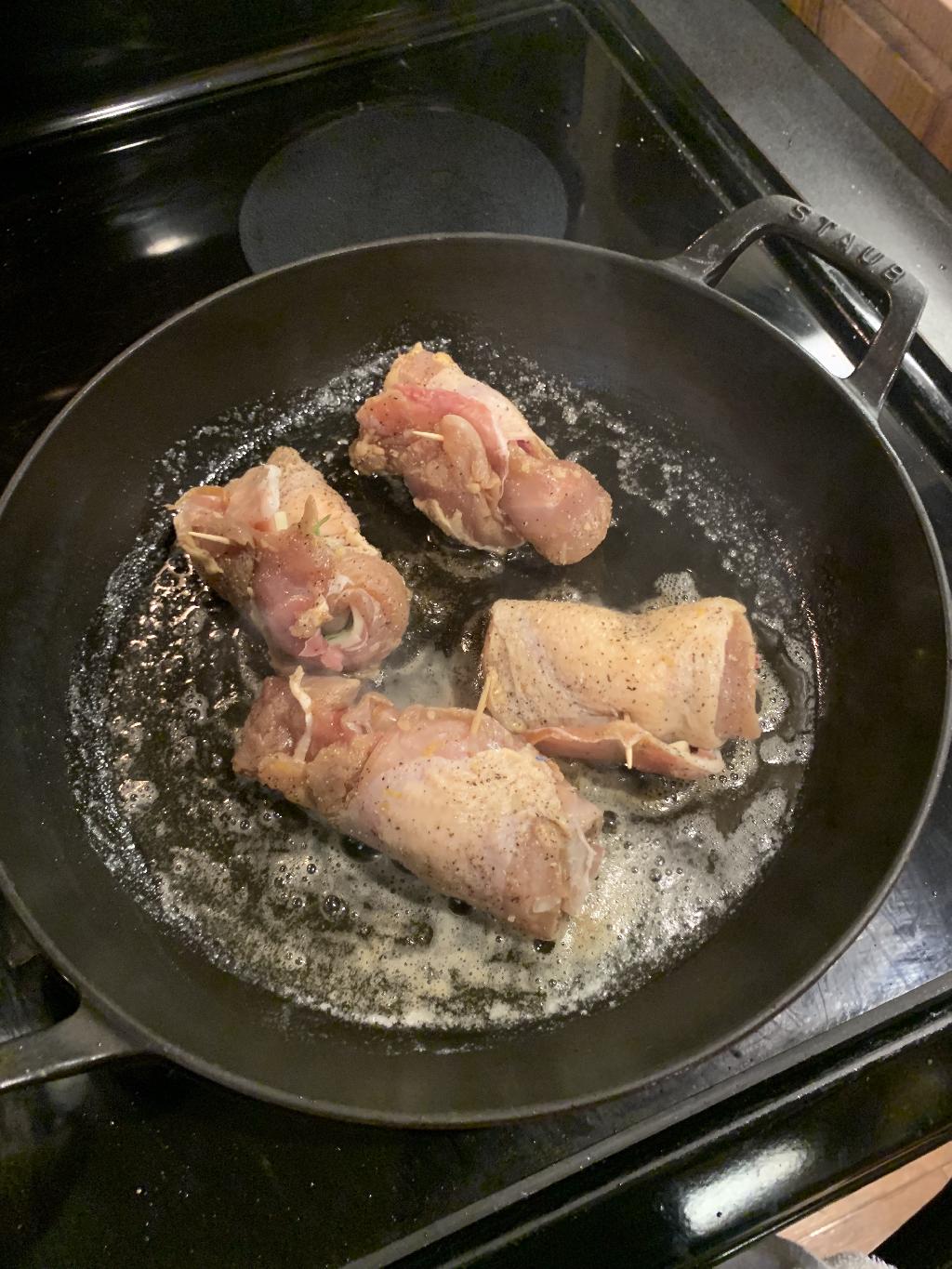
Step #12 Place the Pheasant breast in hot skillet.
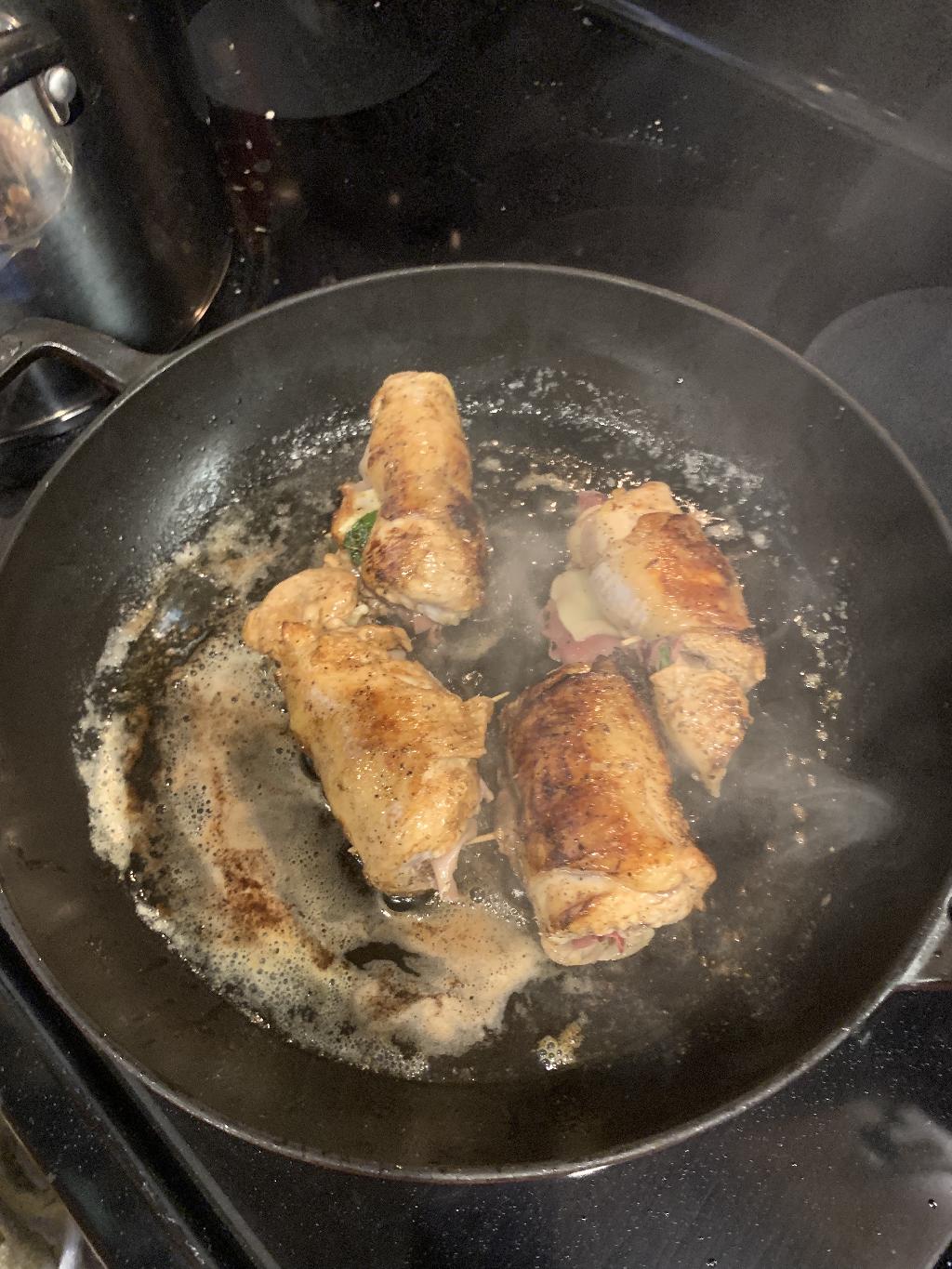
Step #13 Lightly brown all sides, by rolling Pheasant in the pan. Youre not trying to cook the Pheasant, only brown the skin. Well finish this off in the oven.
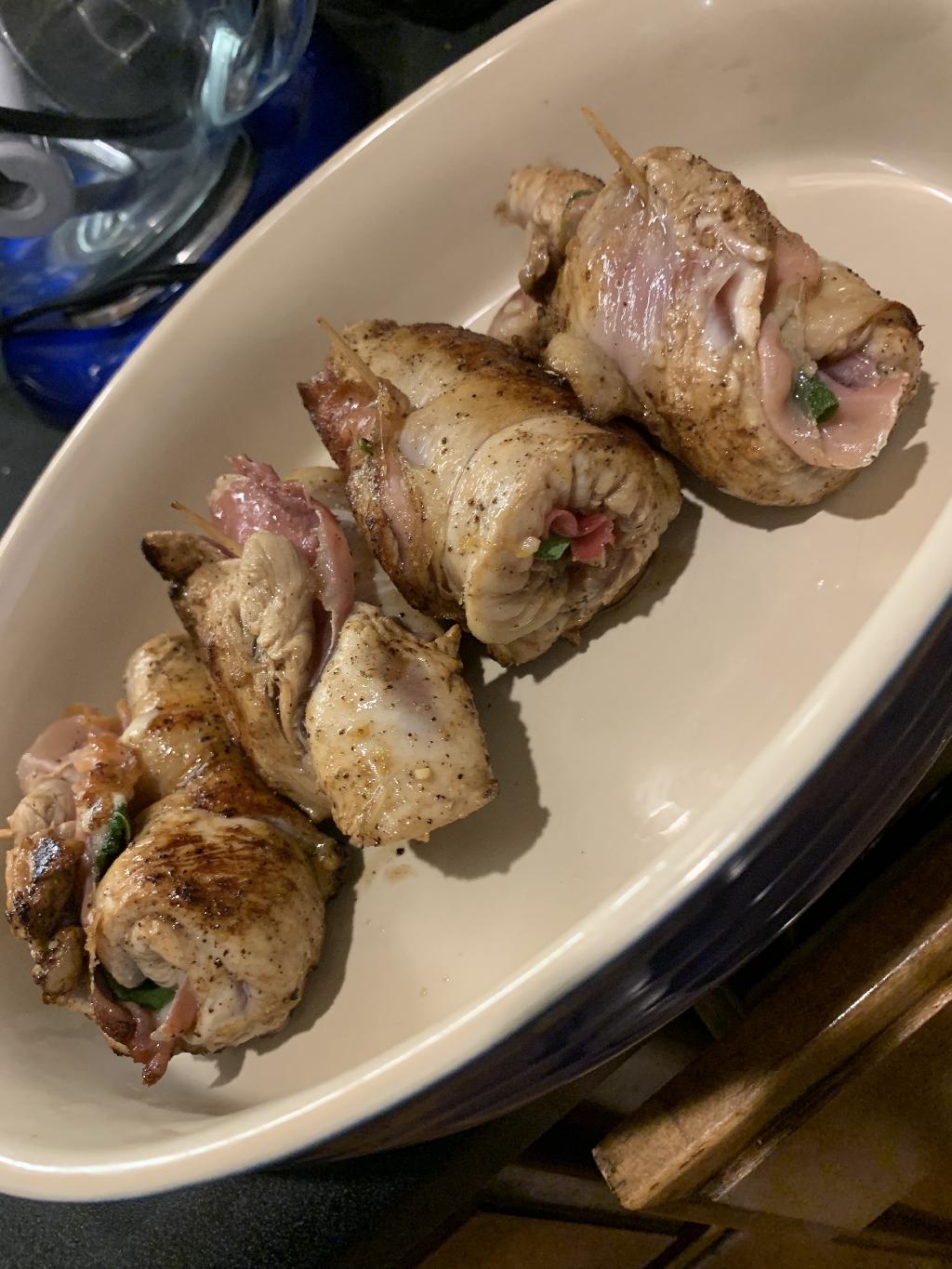
Step #14 Remove Pheasant to oven safe dish and place in oven to cook for 15-20 minutes. Check the temperature after 15 minutes.
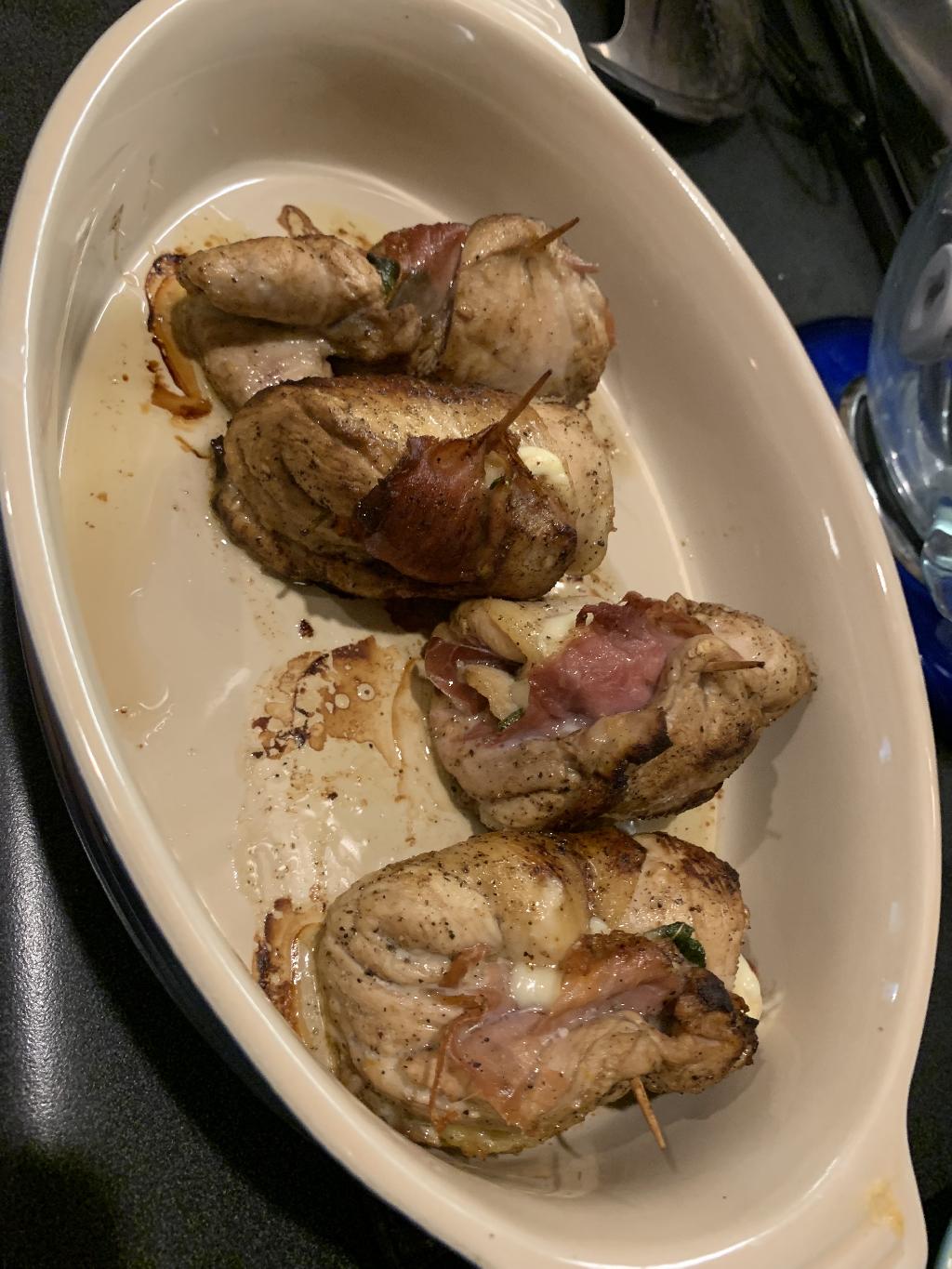
Step #15 When pheasant gets close to 145-150 range, remove from oven and sprinkle of Italian cheese blend. Set oven broiler to HI and place back in the oven to cheese melt, letting the cheese on top brown a little. Be sure to check on this often! It wont take long.
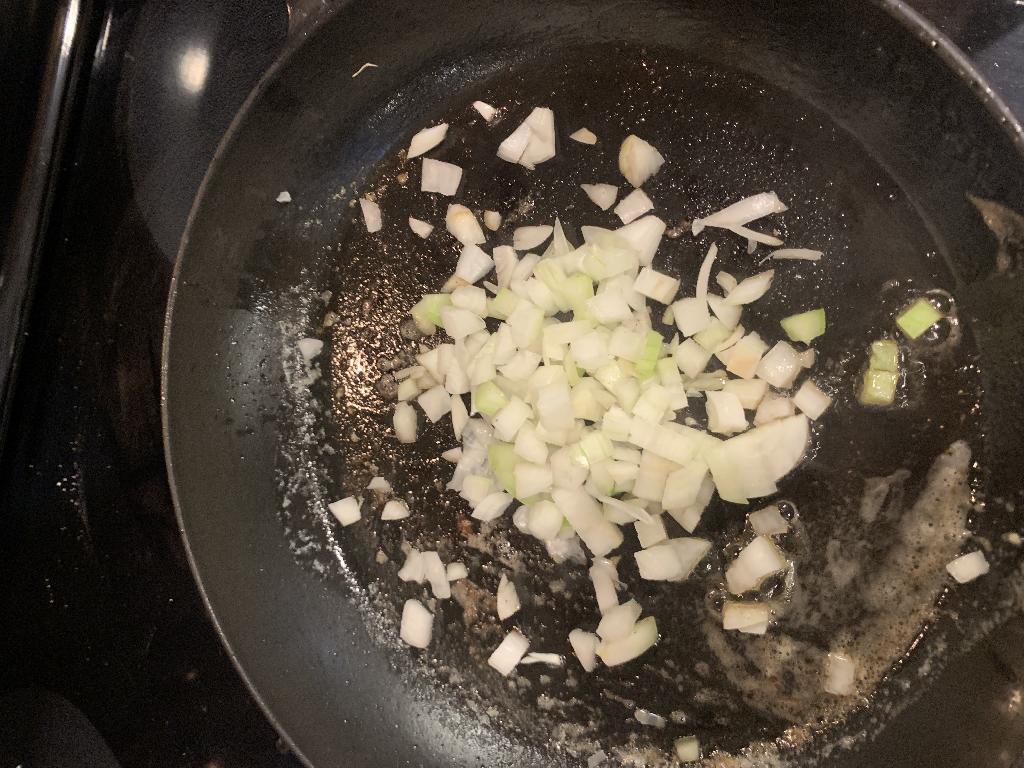
Step #16 Remove any excess oil, leaving about 1-2 tablespoons in pan. Add diced up onion to pan, add salt and pepper, allow to cook for 5-8 minutes, until onion is soft and translucent.
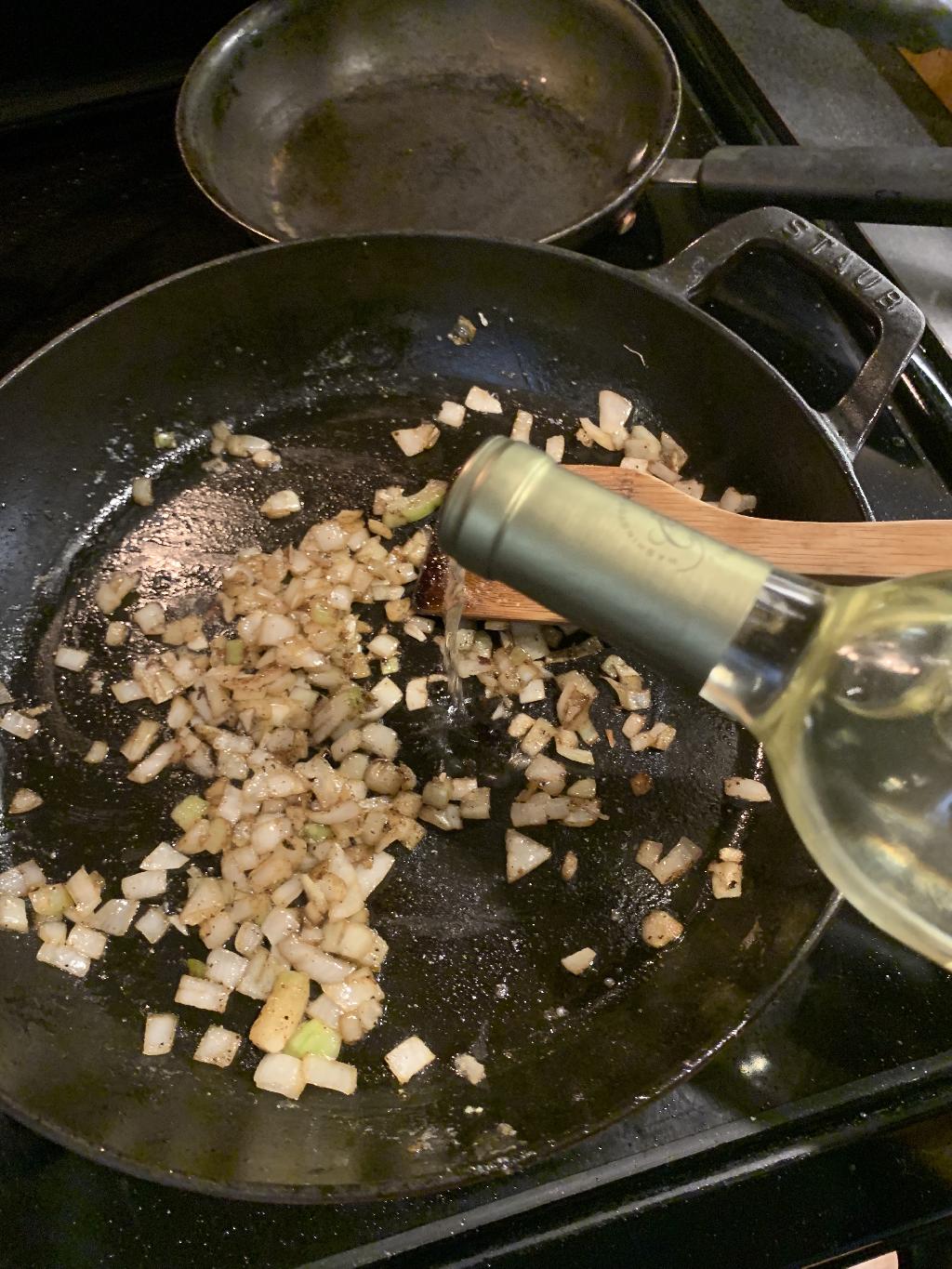
Step #17 Add white wine to deglaze the pan, using a spatula to scrap up any brown bits from the bottom.
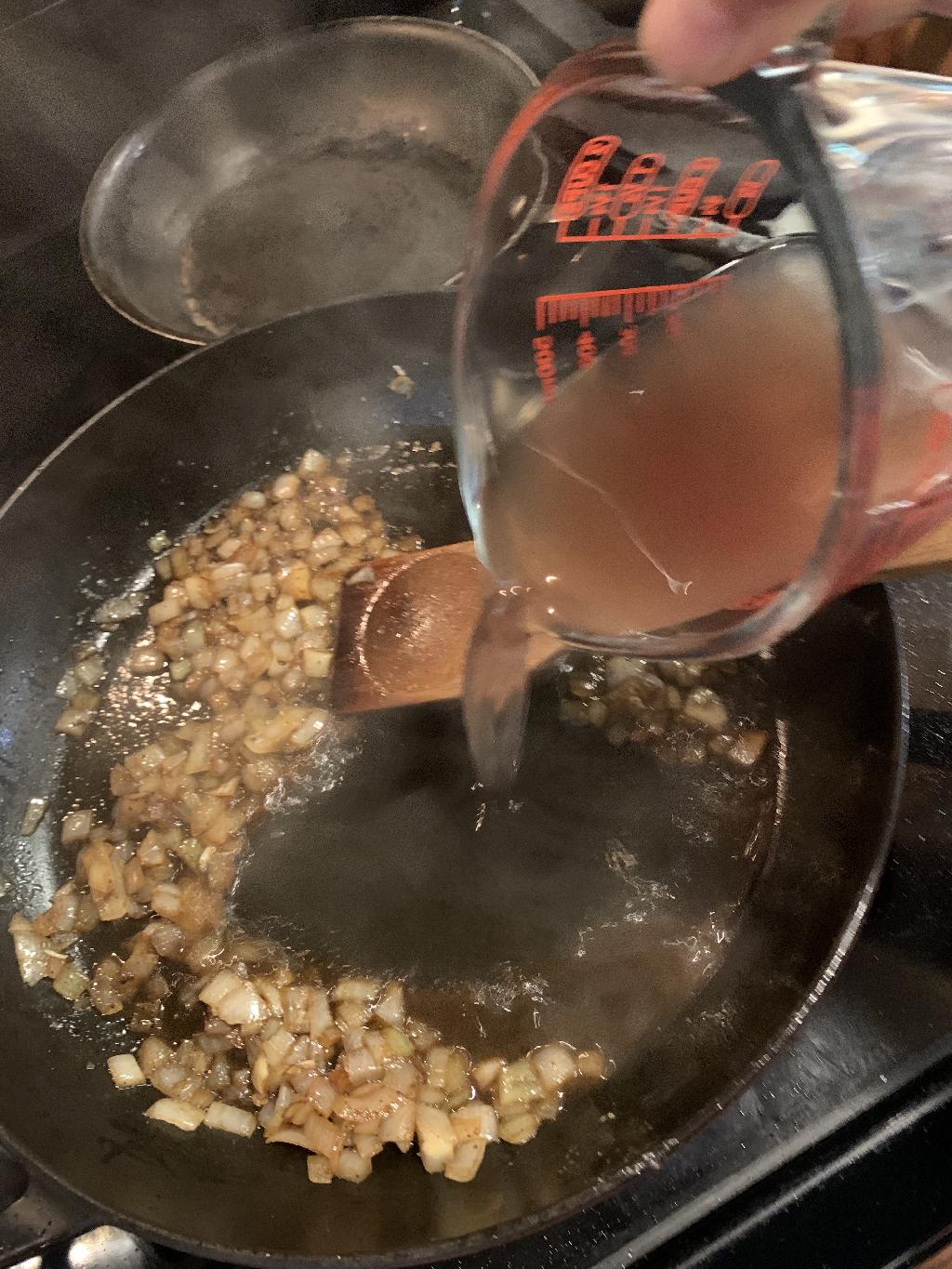
Step #18 Add Pheasant Stock and lemon juice. Bring to a boil.
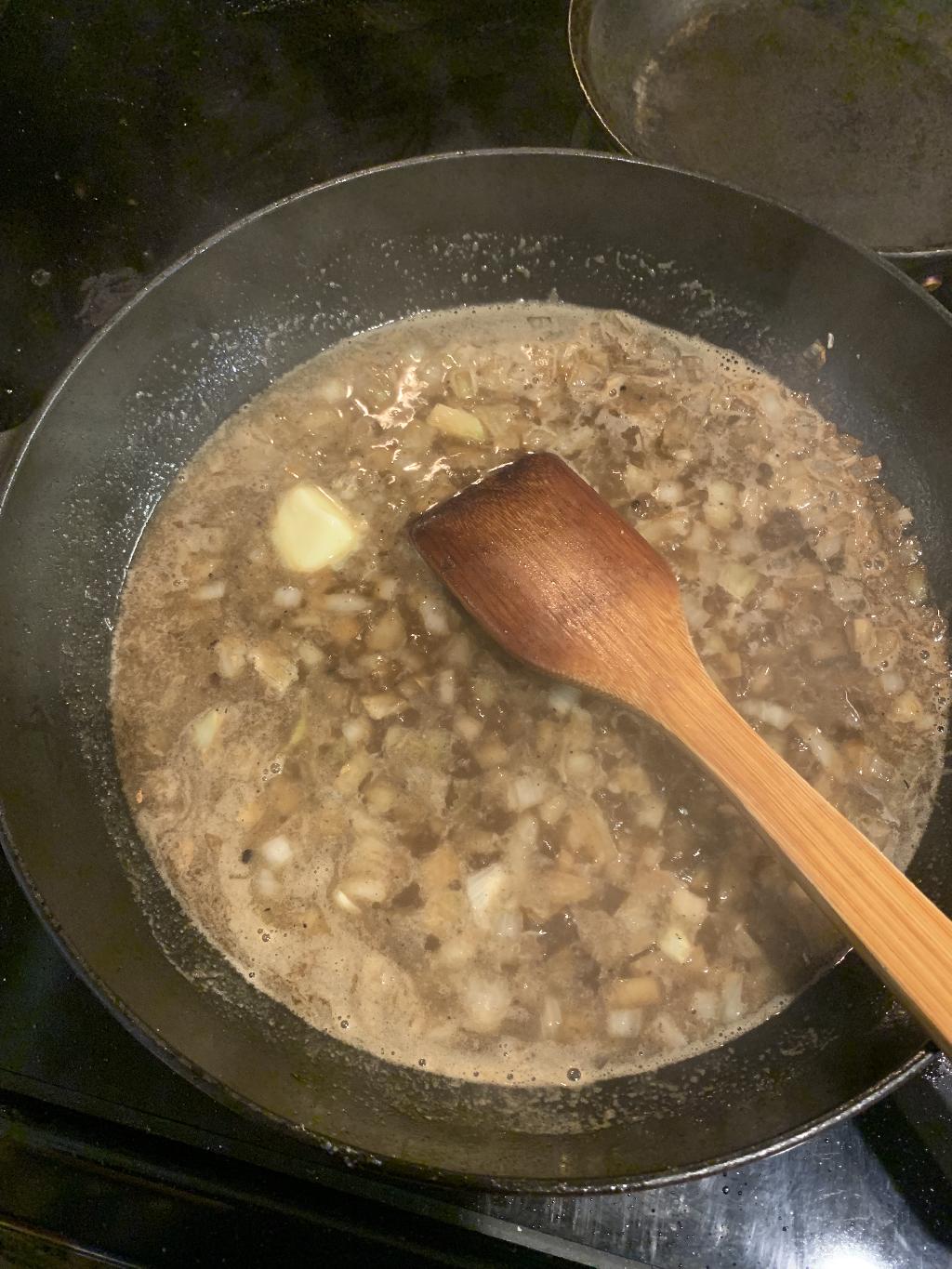
Step #19 Add two tables spoons for butter using spatula to combine.
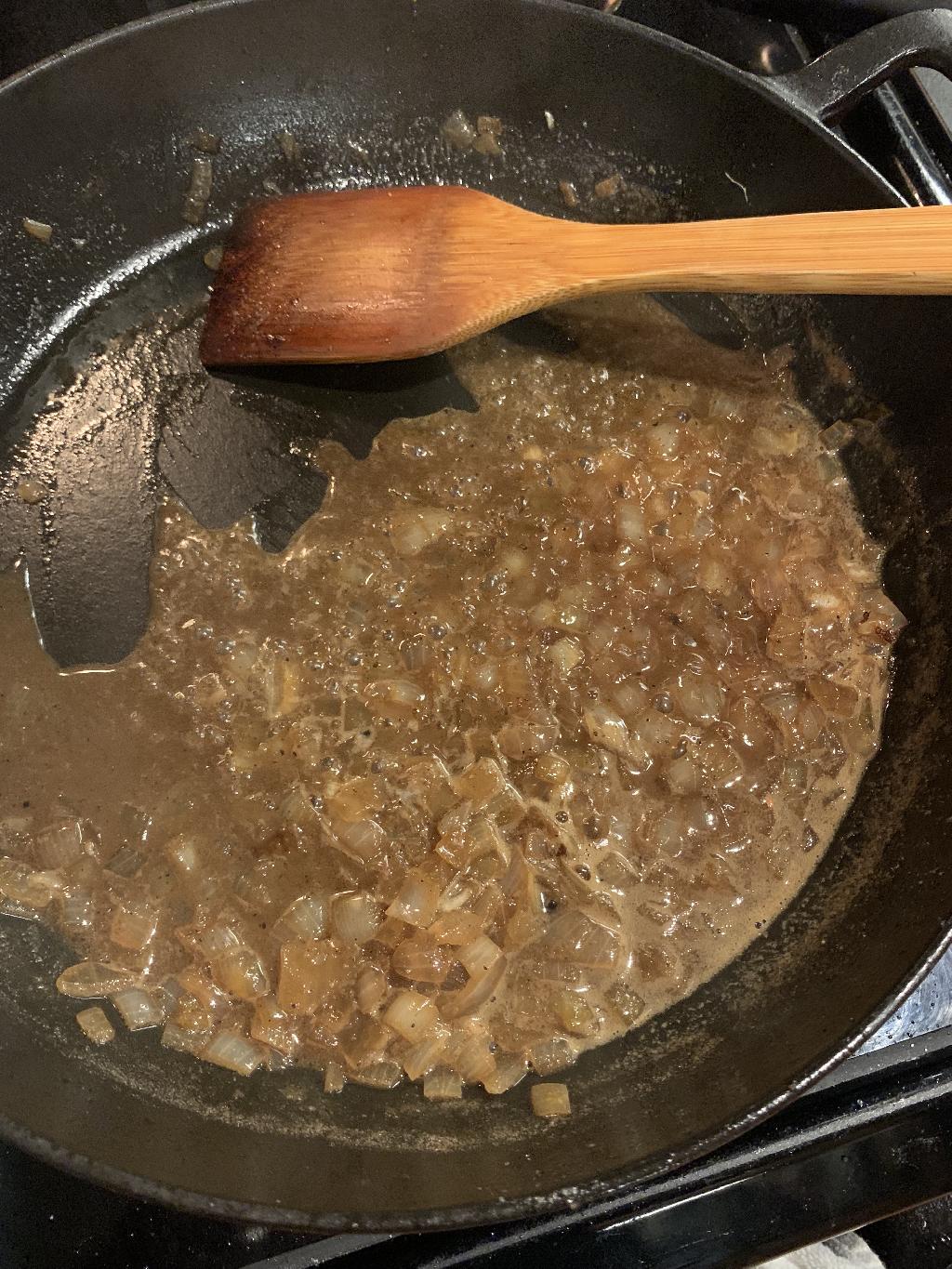
Step #20 When sauce is reduced by half, turn off heat.
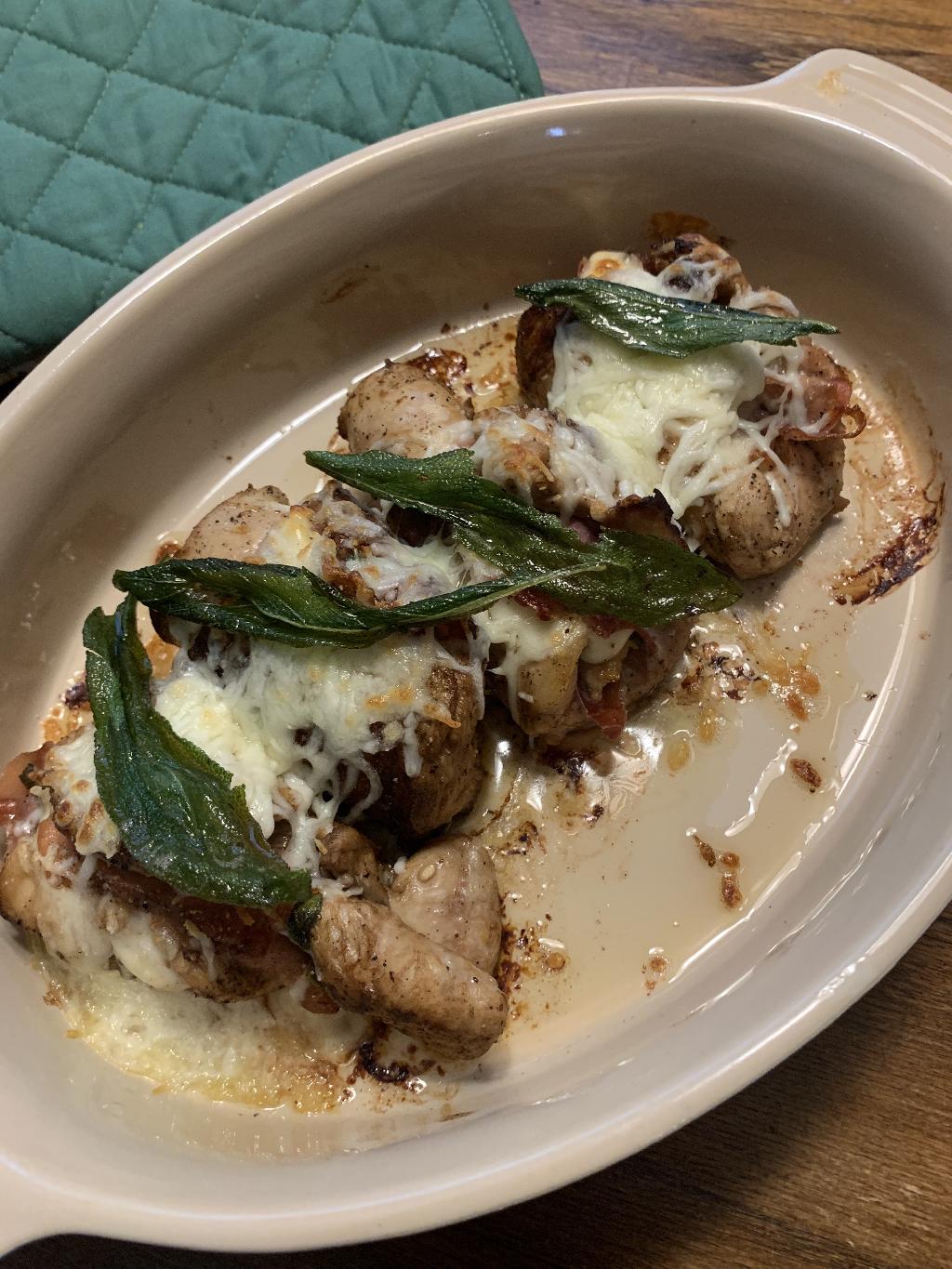
Step #21 Add fried sage leaves to the top of Pheasant.
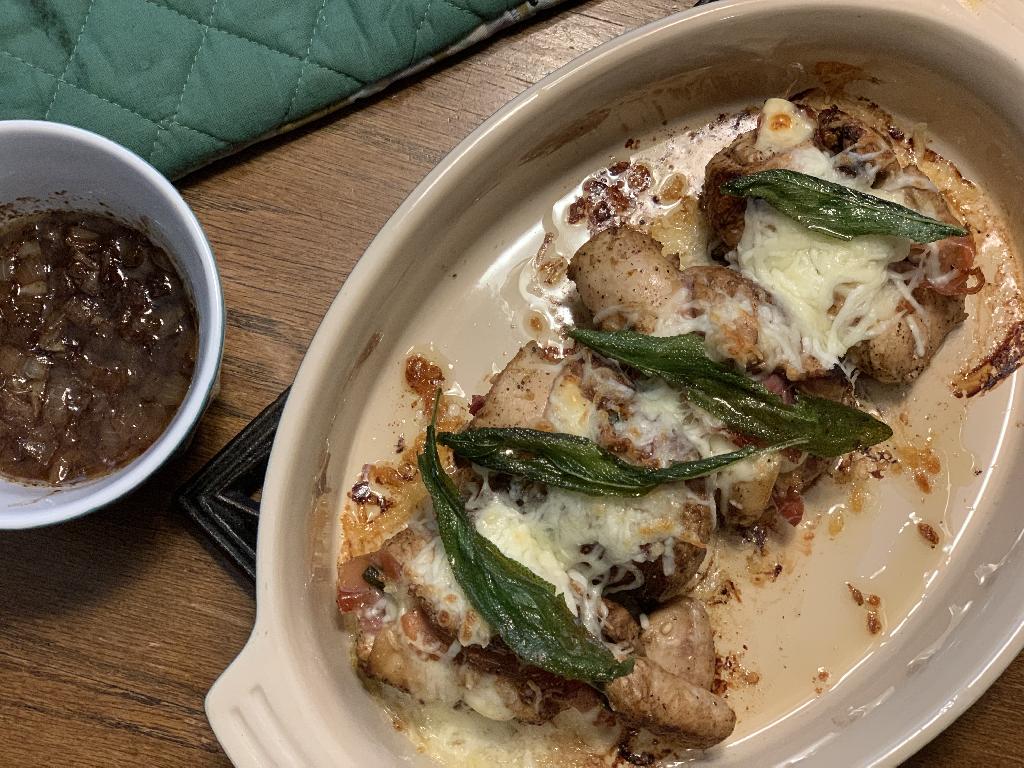
Step #22 Optionally, you can pour your sauce in the bottom of dish. I choose to keep my separate.
Basil Pesto
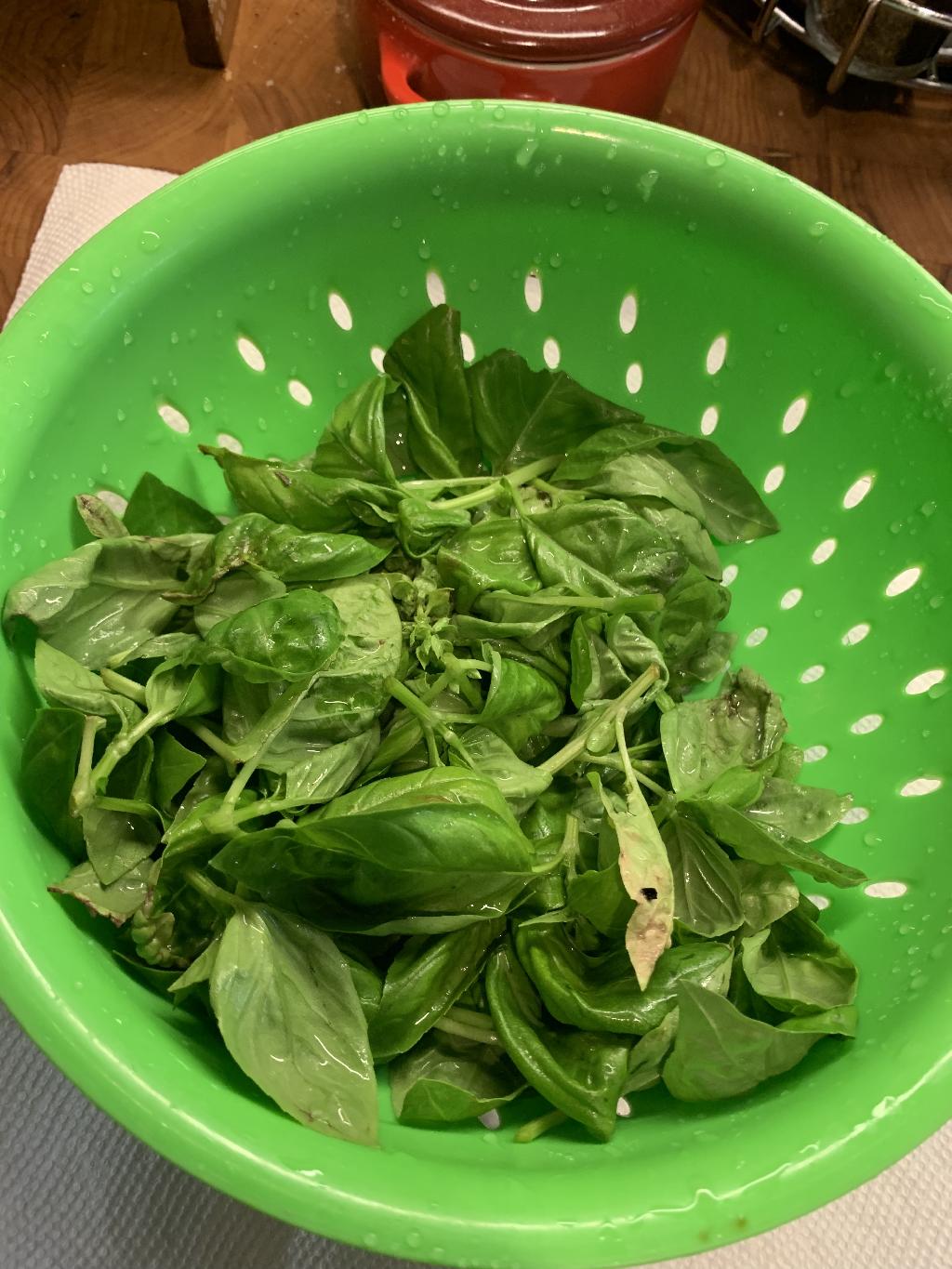
Step #1 Wash fresh Basil and let sit on paper towel or wire rack to dry.
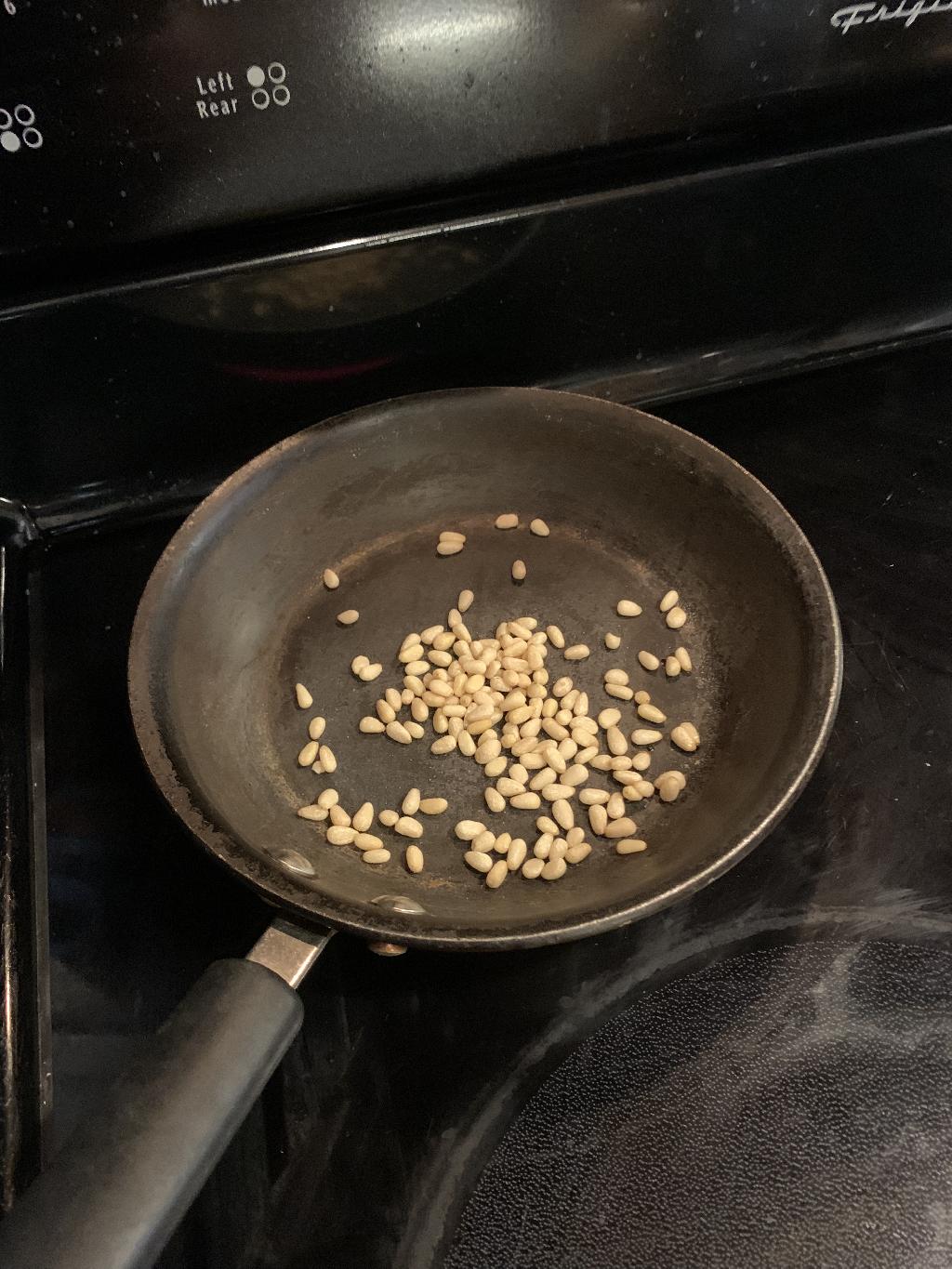
Step #2 In a small skillet, add pine nuts and start toasting on medium heat.
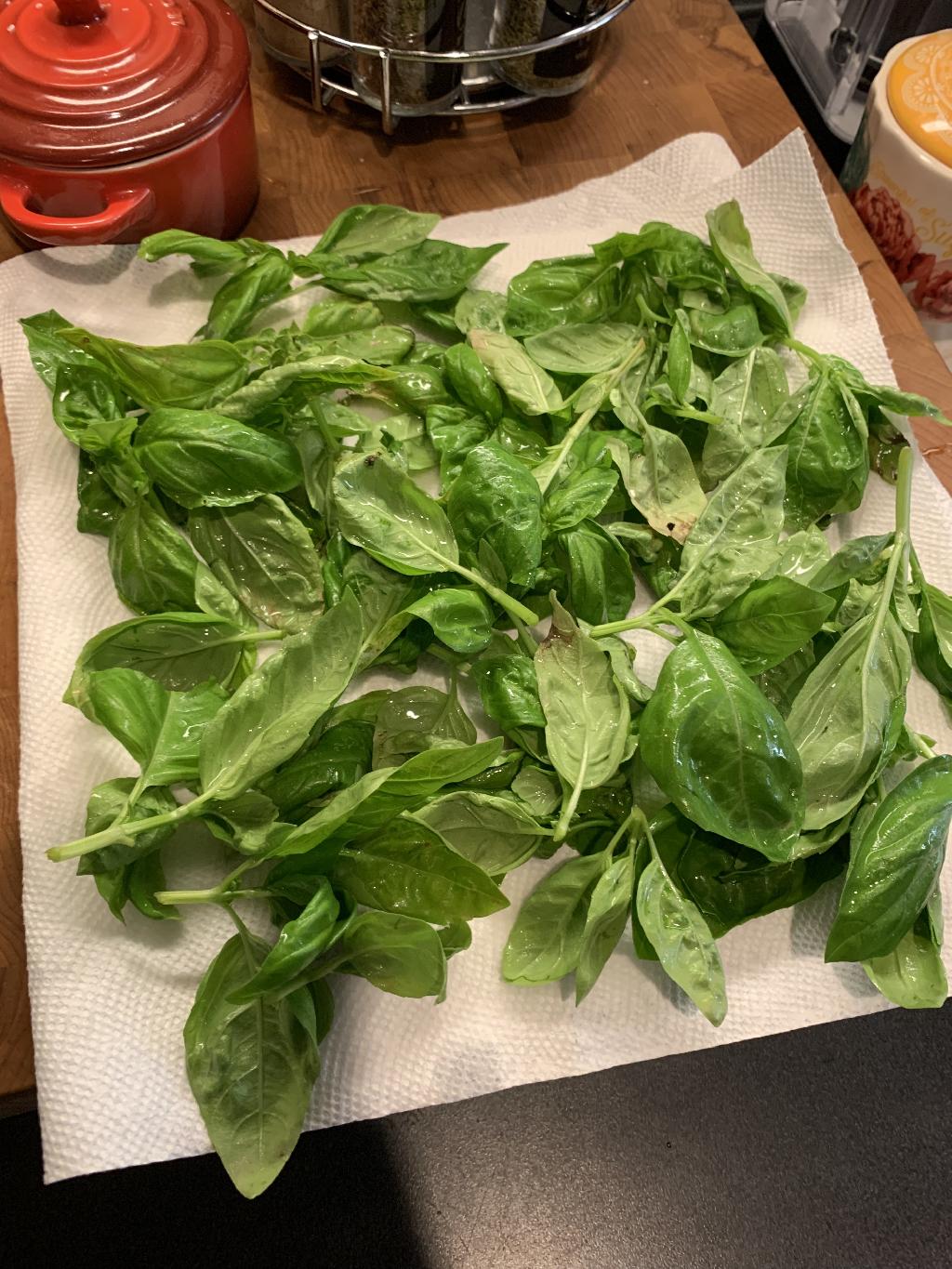
Step #3 Peel the Garlic, then measure out the rest of ingredients you'll need.
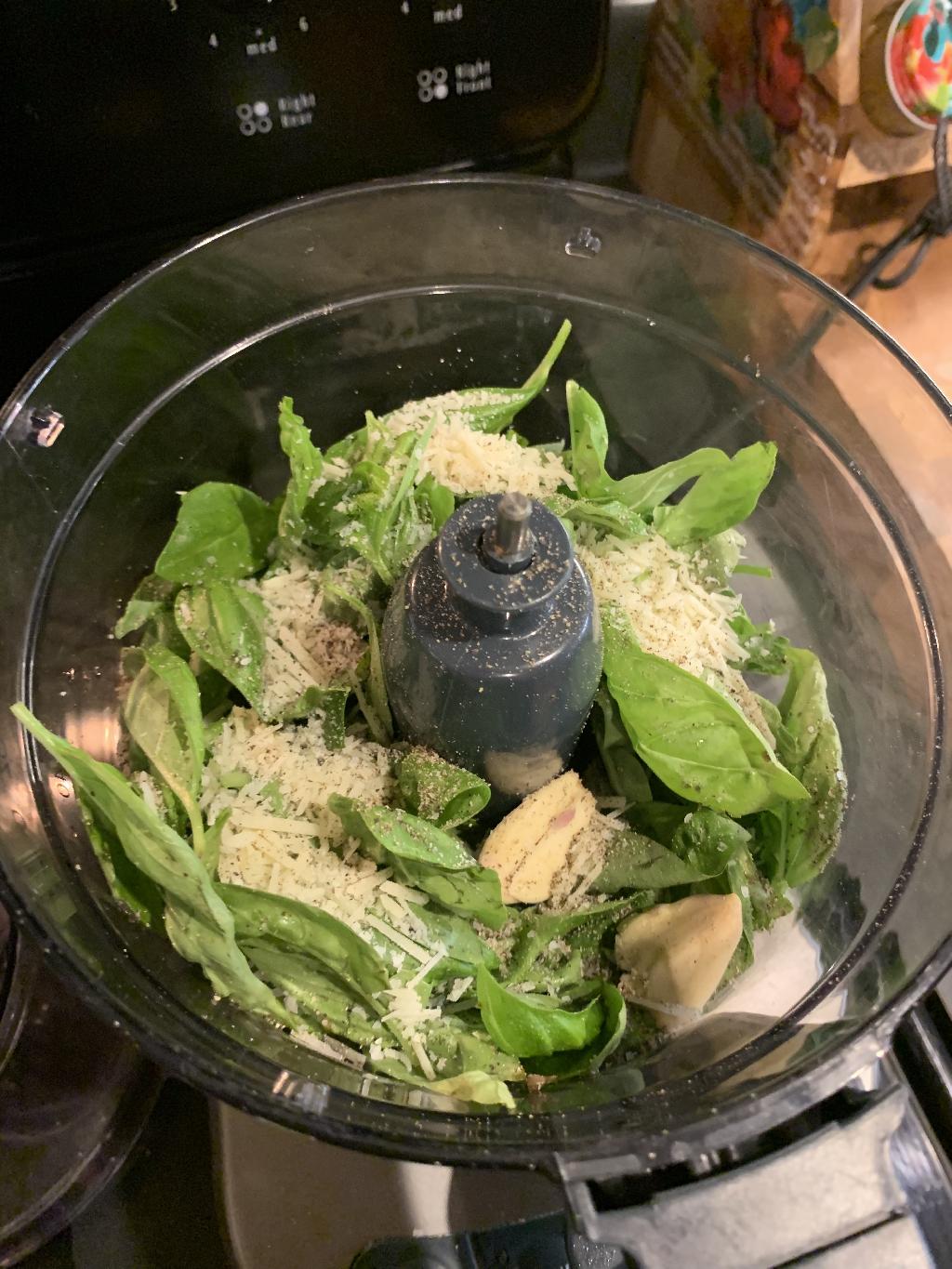
Step #4 Add Basil, Garlic, toasted Pine nuts, Parmesan Cheese, Black Pepper and Salt to food processor.
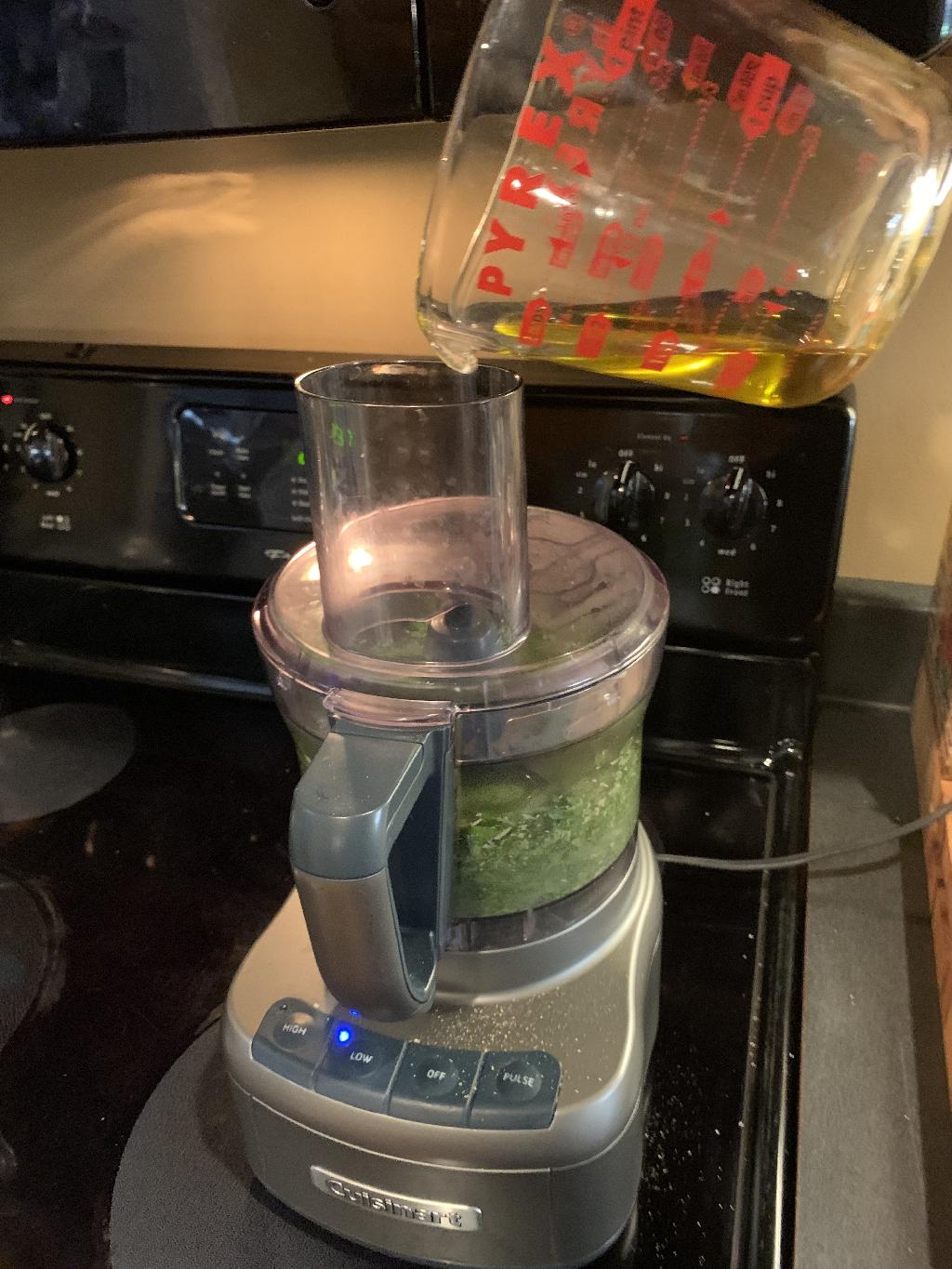
Step #5 Slow pour Olive oil into food processor with speed set on low.
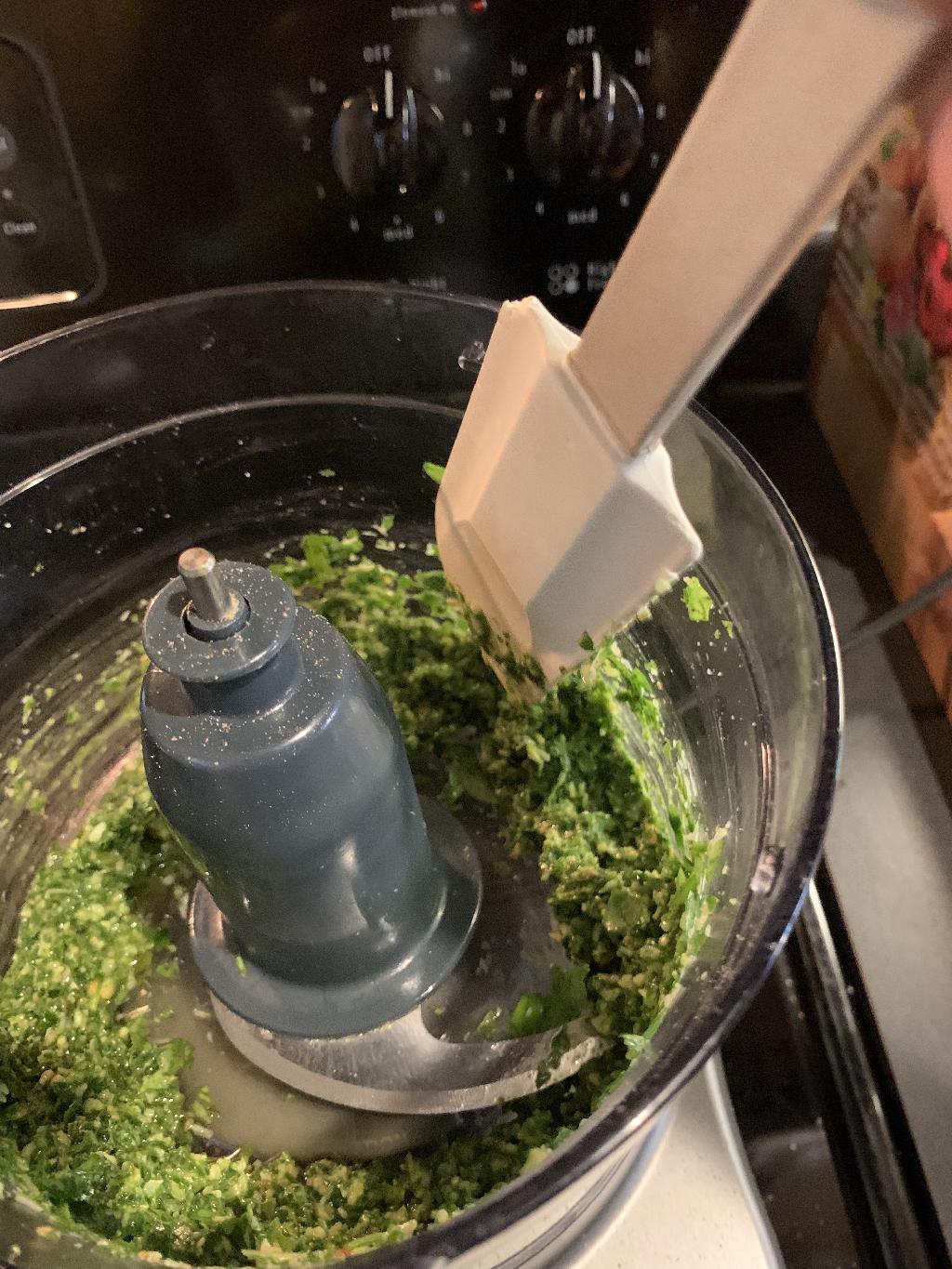
Step #6 You may need to stop occasionally to scrape down sides.
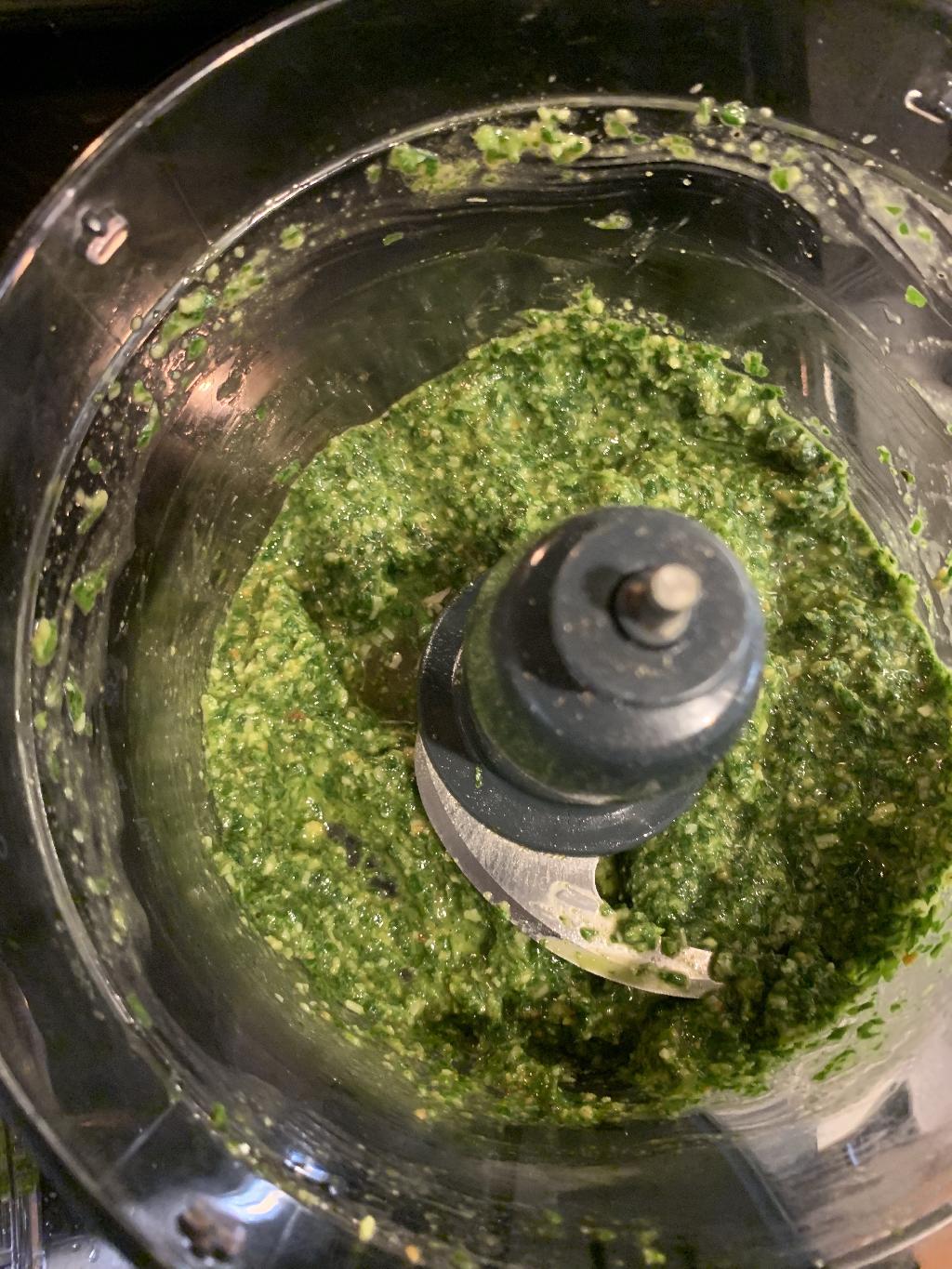
Step #7 Taste the pesto and add additional salt and pepper if need.
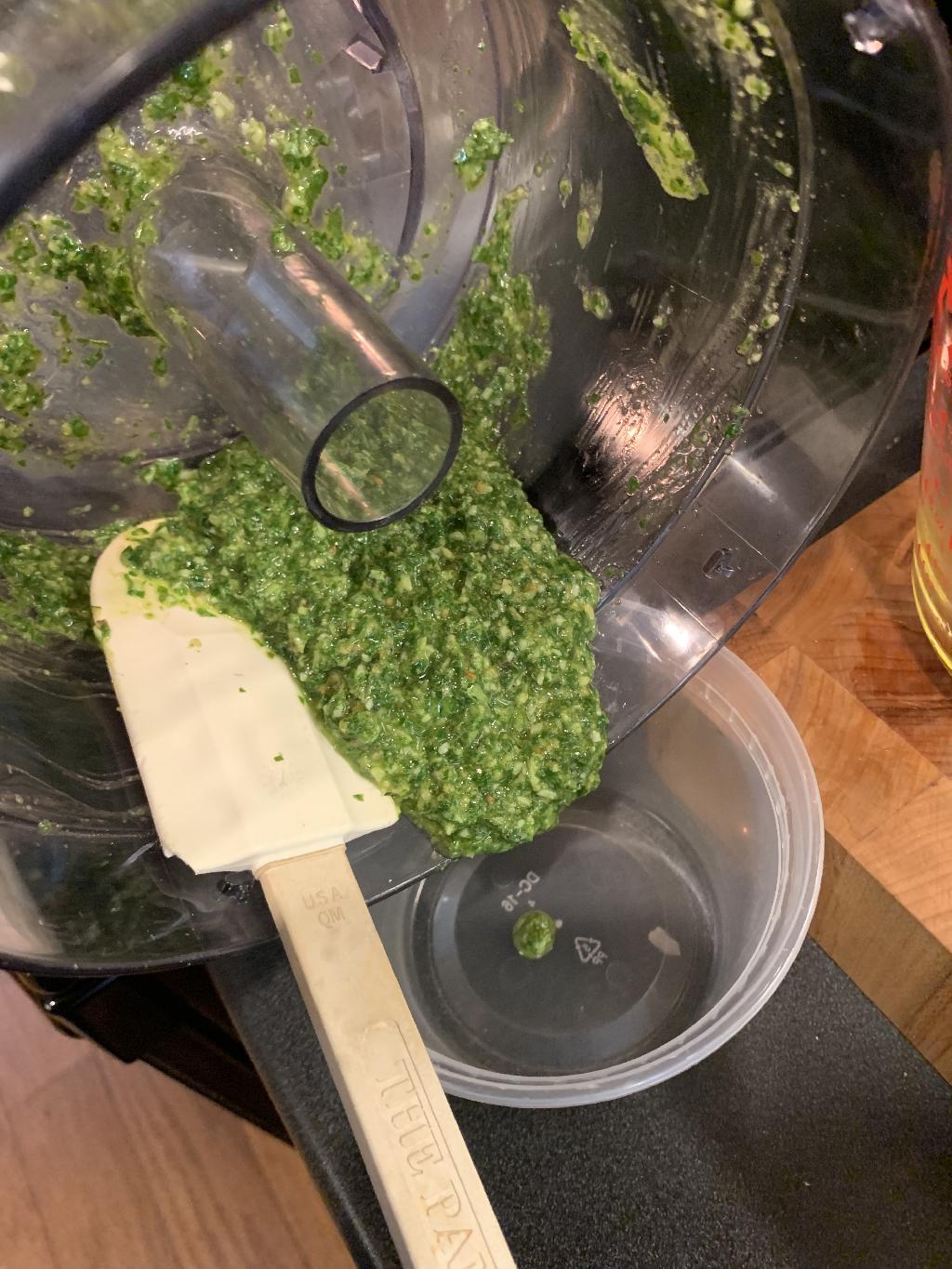
Step #8 Scrap out of food processor into small container, then drizzle the top with Olive oil and place in the refrigerator until ready to use.
Potato Gnocchi
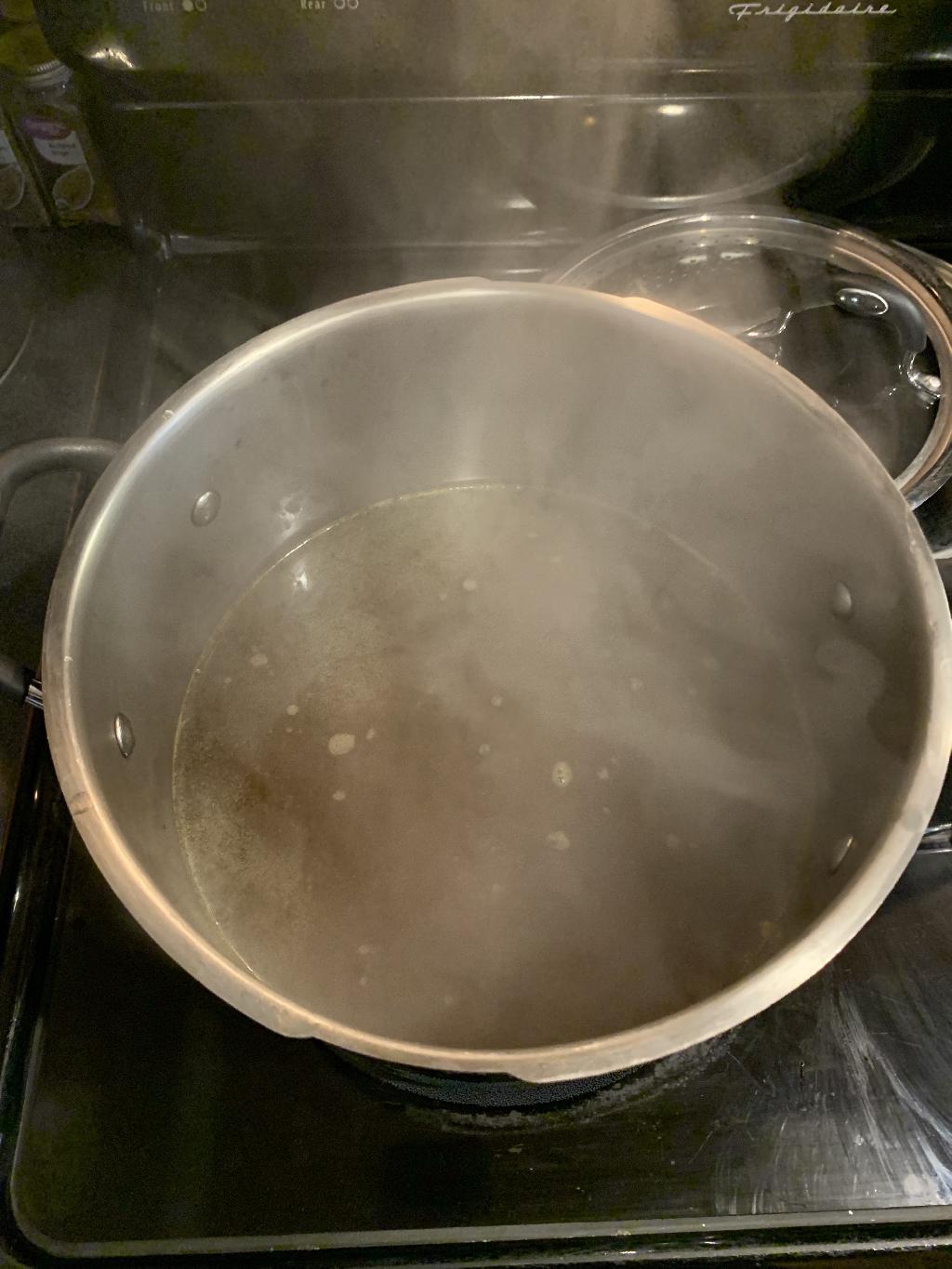
Step #1 Pour 6 cups of Pheasant Stock into pot large stock pot. Add a generous amount of salt to your stock if it's not salted. Even if your stock is salted, you'll want to add more salt. You want it to taste like saltwater. If you don't have Pheasant stock, you can use salted water. If you don't have enough stock to cover potatoes, add additional water. Set heat to high and let stock reach a boil.
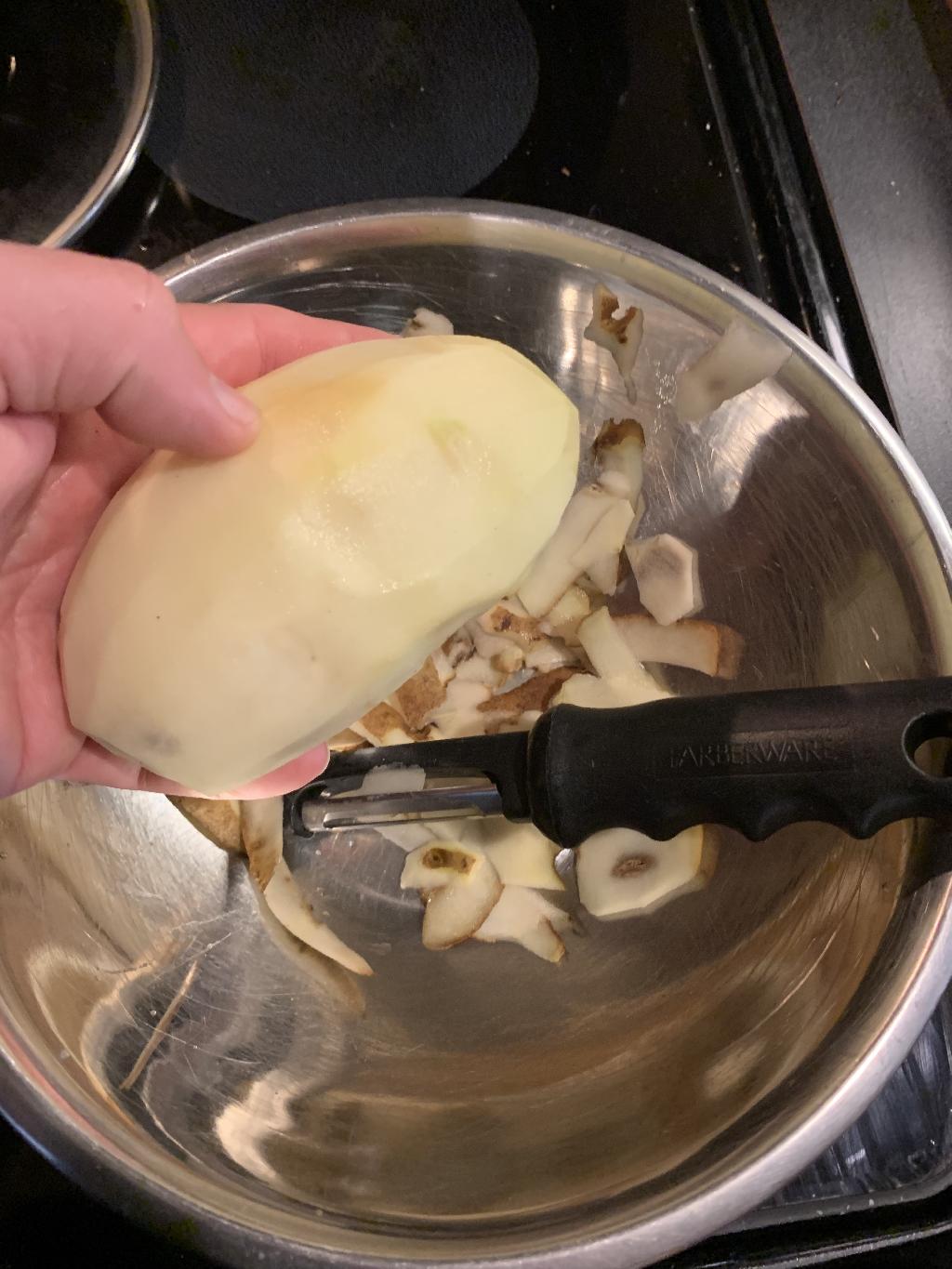
Step #2 While stock is reaching a boil, wash, and peel Potatoes.
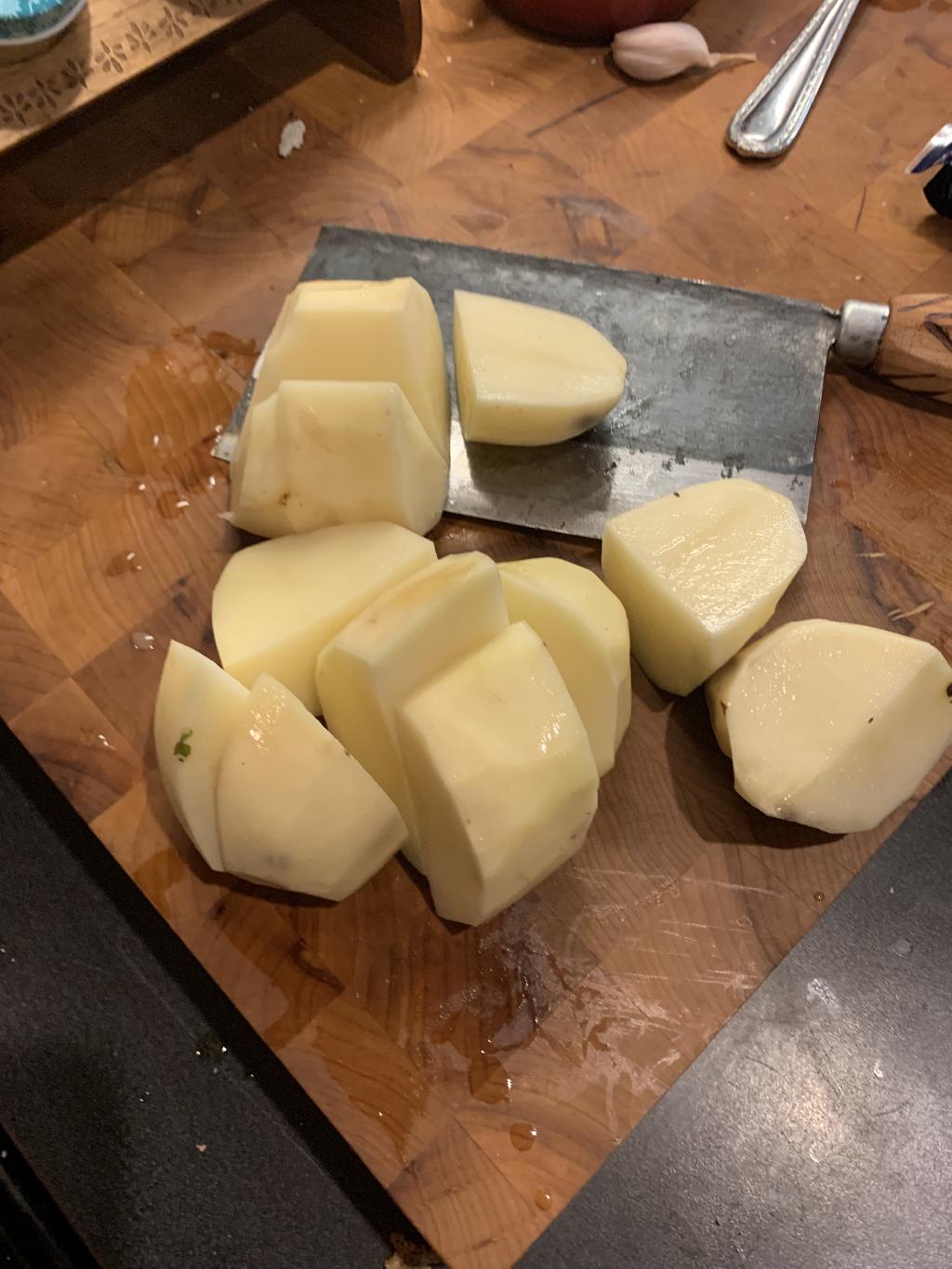
Step #3 Cut your potatoes into smaller pieces so they don't take as long to cook.
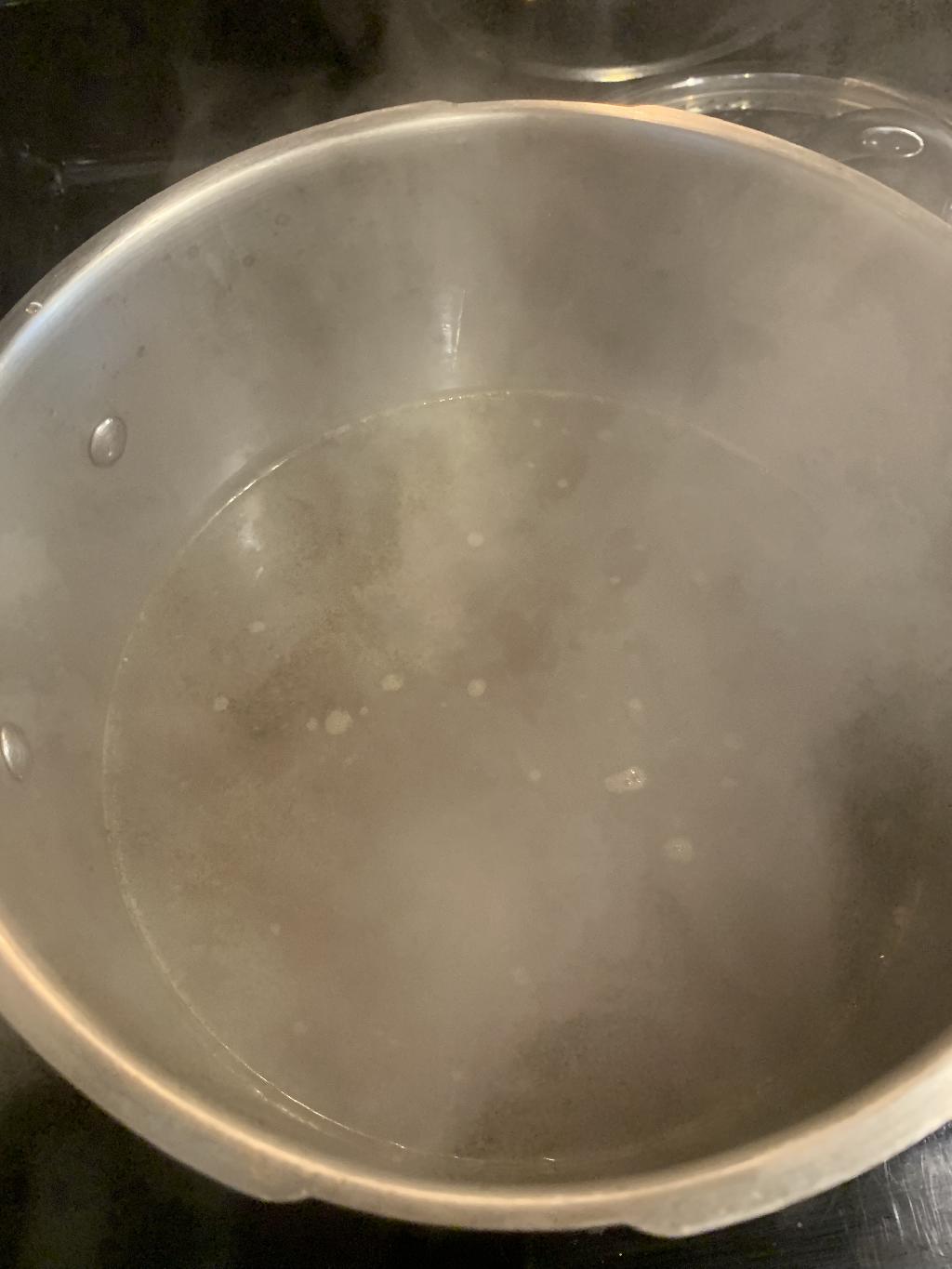
Step #4 Once stock is boiling, reduce heat and add potatoes. Allow to cook until fork tender, mine took 15 minutes. Remove potatoes from stock with slotted spoon, but do not discard stock. Allow it to stay warm on the stove. We'll use it later to cook the Gnocchi.
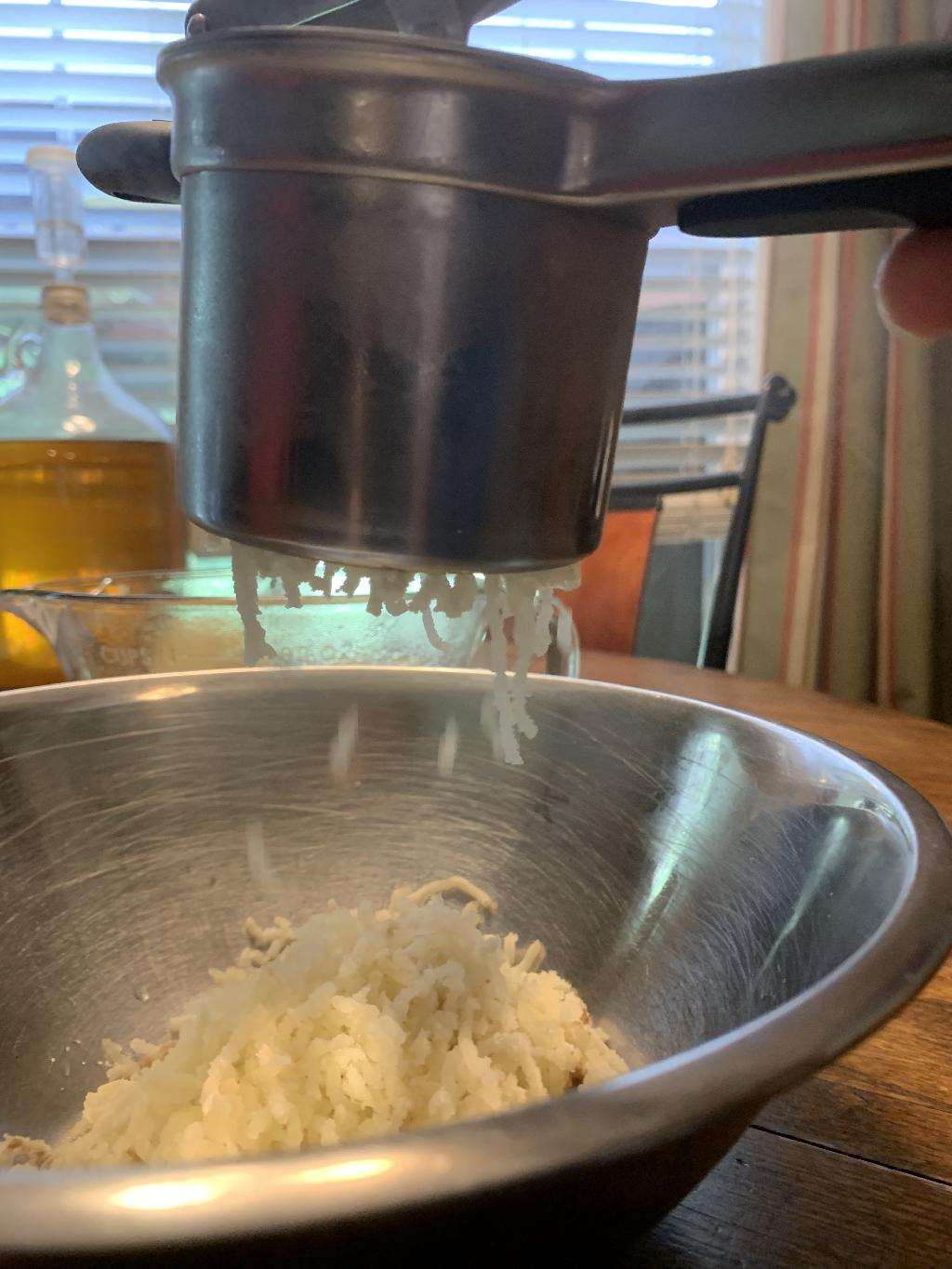
Step #5 Using a ricer or fork, mash the potatoes into a bowl. Using a ricer should make for a fluffier Gnocchi.
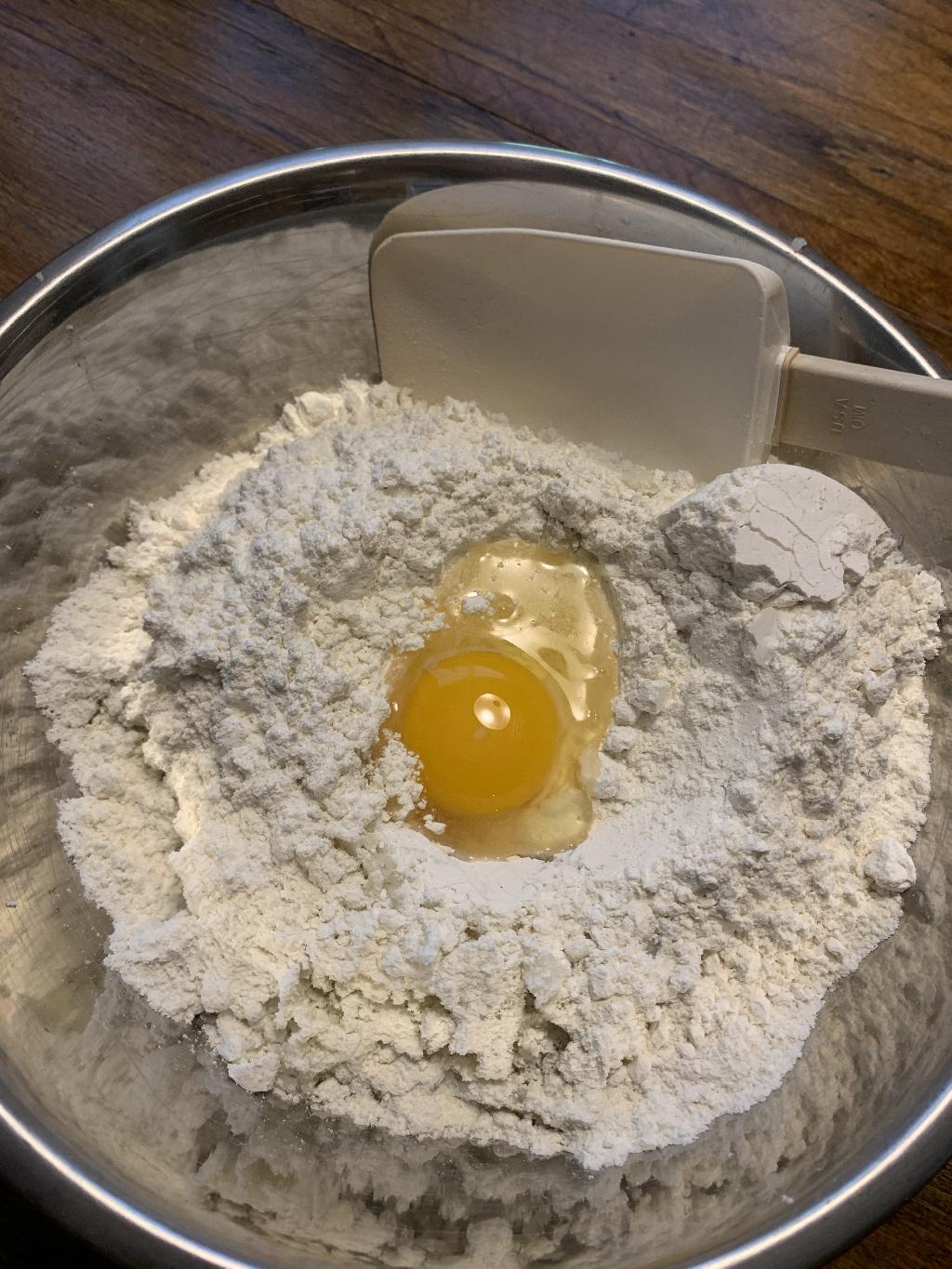
Step #6 Allow to potatoes to cool, before adding egg, pinch of salt and 1 cup of flour to bowl . Adding eggs to hot potatoes might cook them. Use spatula or hands to combine potatoes, flour, and eggs.
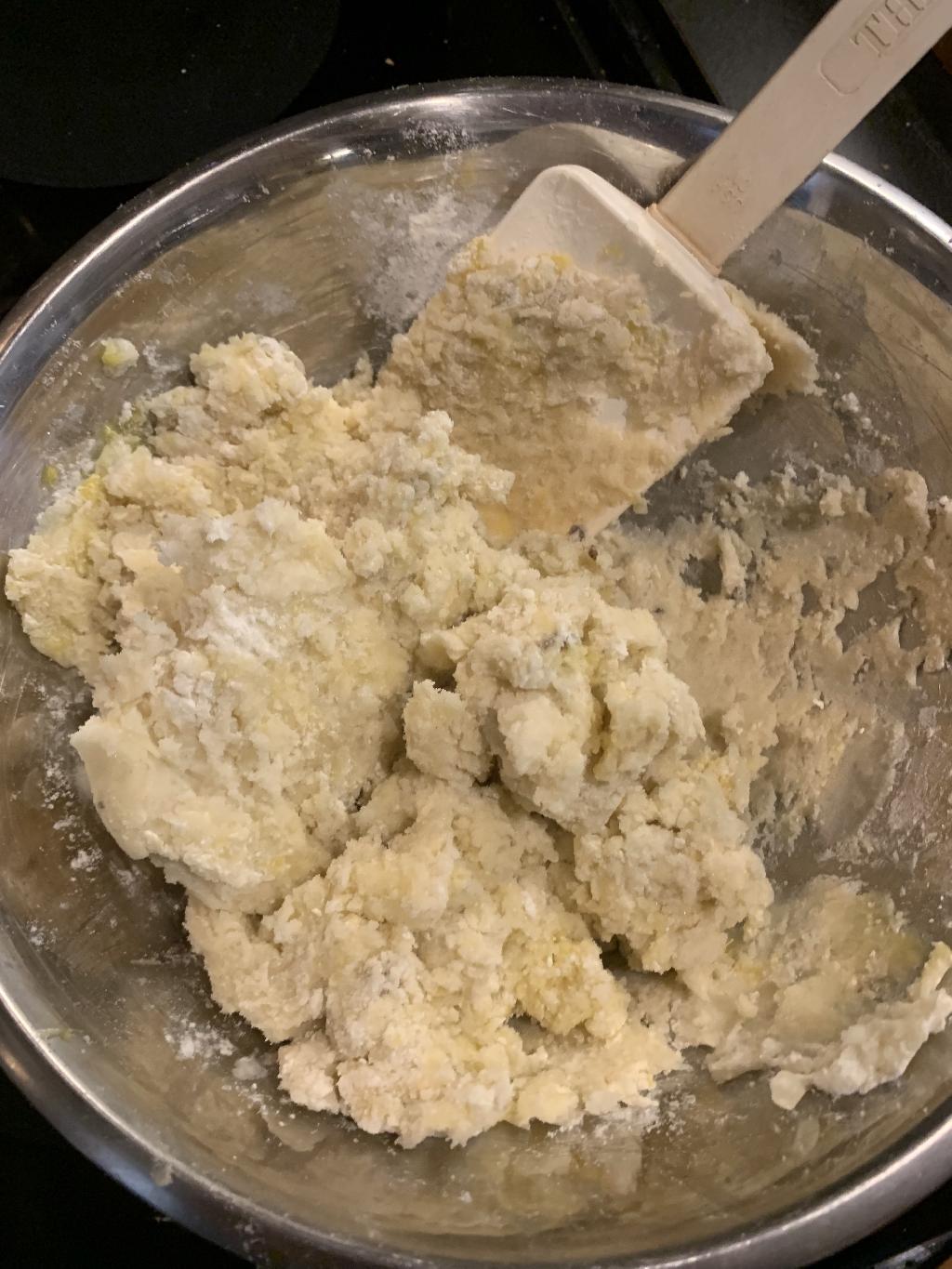
Step #7 Use a spatula to combine, but don't want to over work the dough.
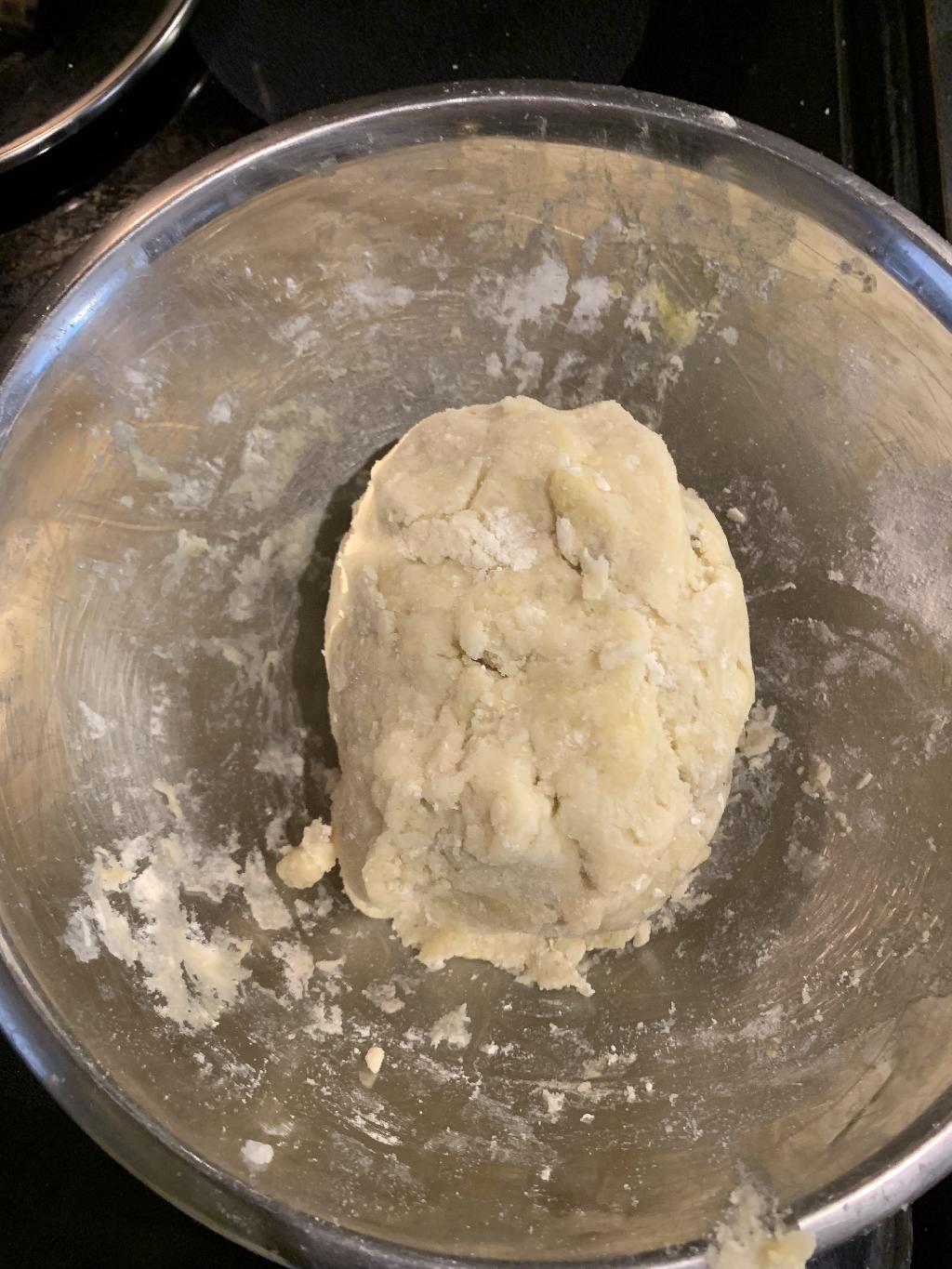
Step #8 Form the dough into a ball shape.
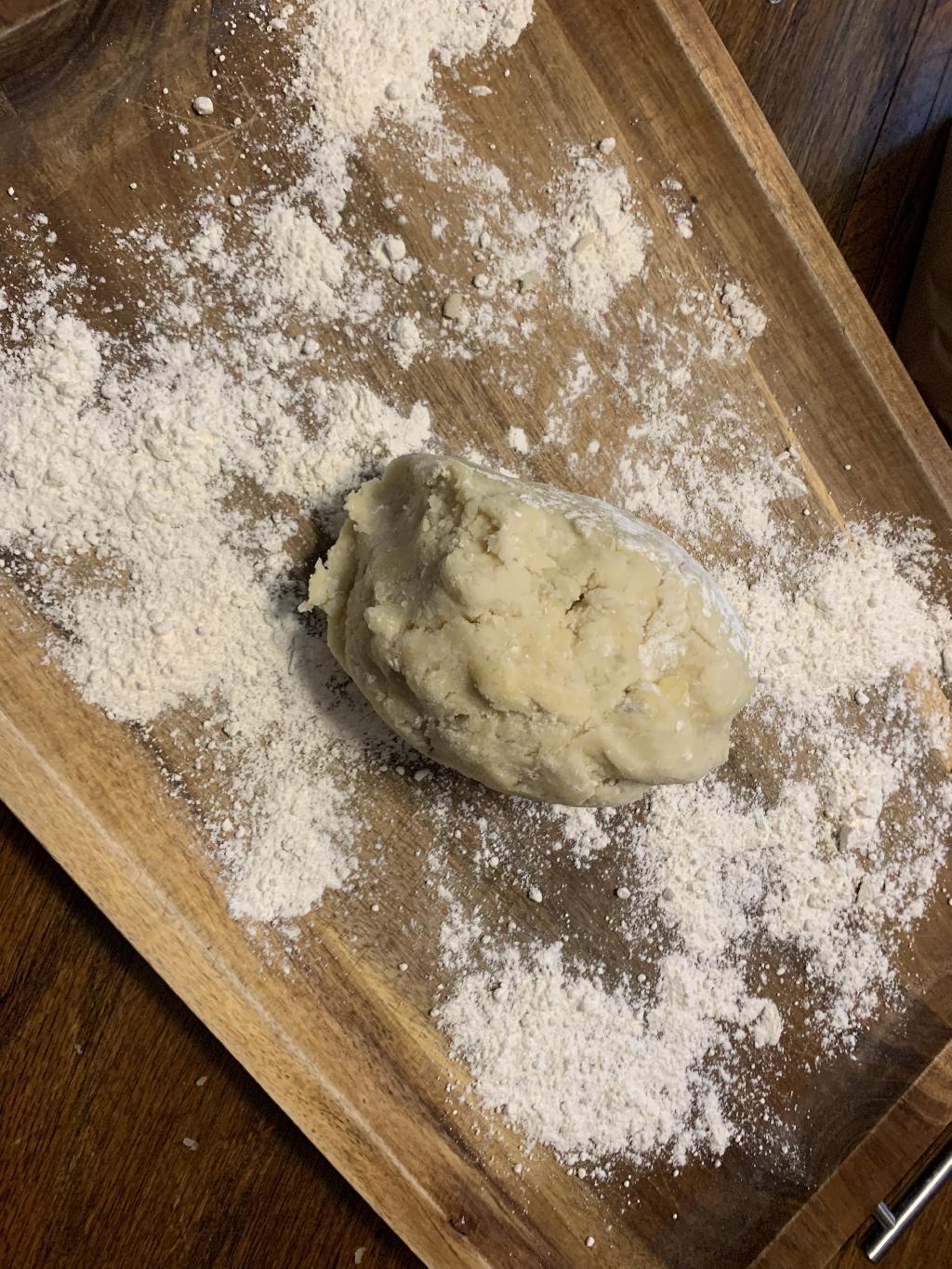
Step #9 Dump out onto well-floured surface.
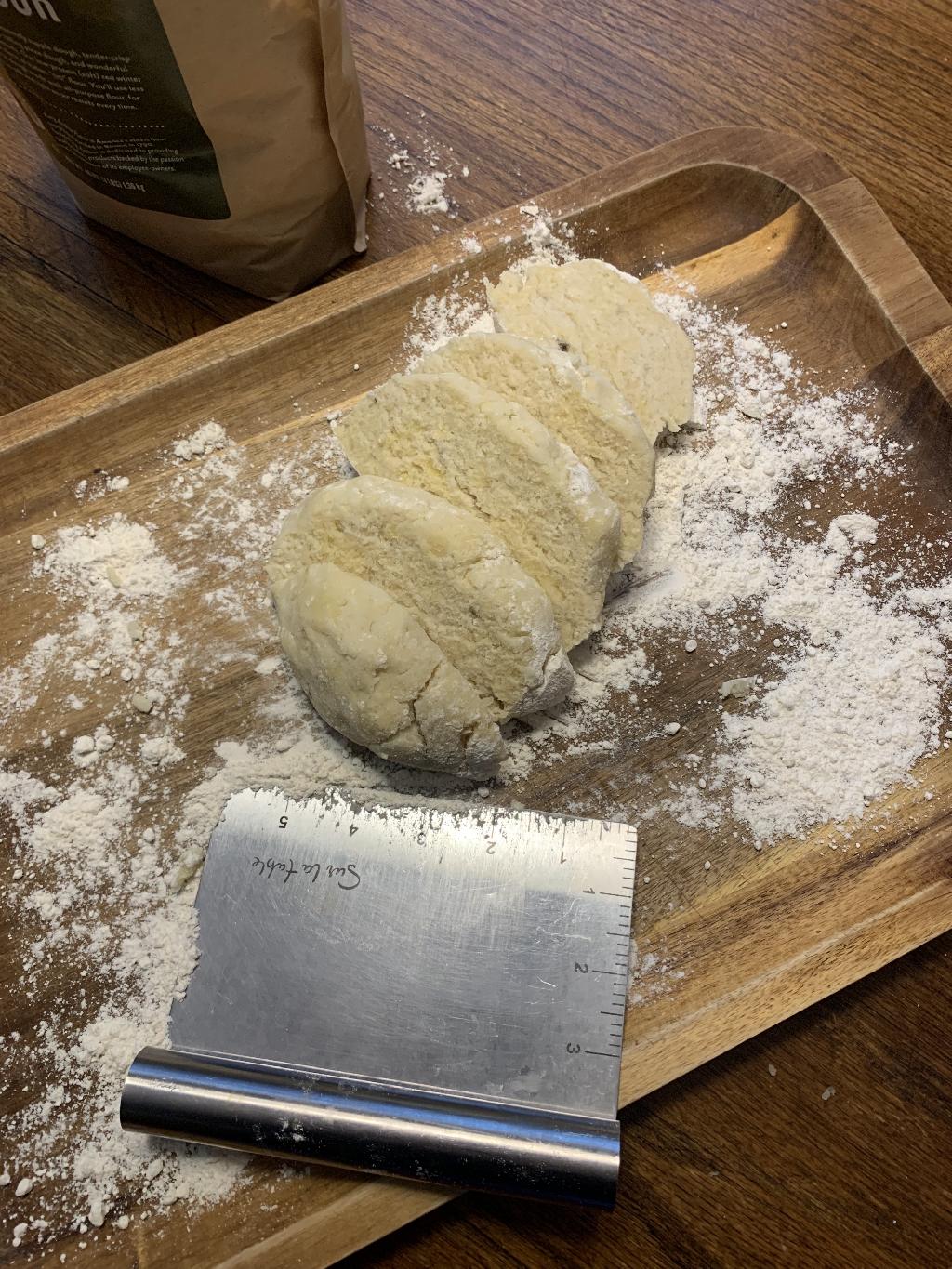
Step #10 Using a knife or pasta scrapper, divided into smaller pieces.
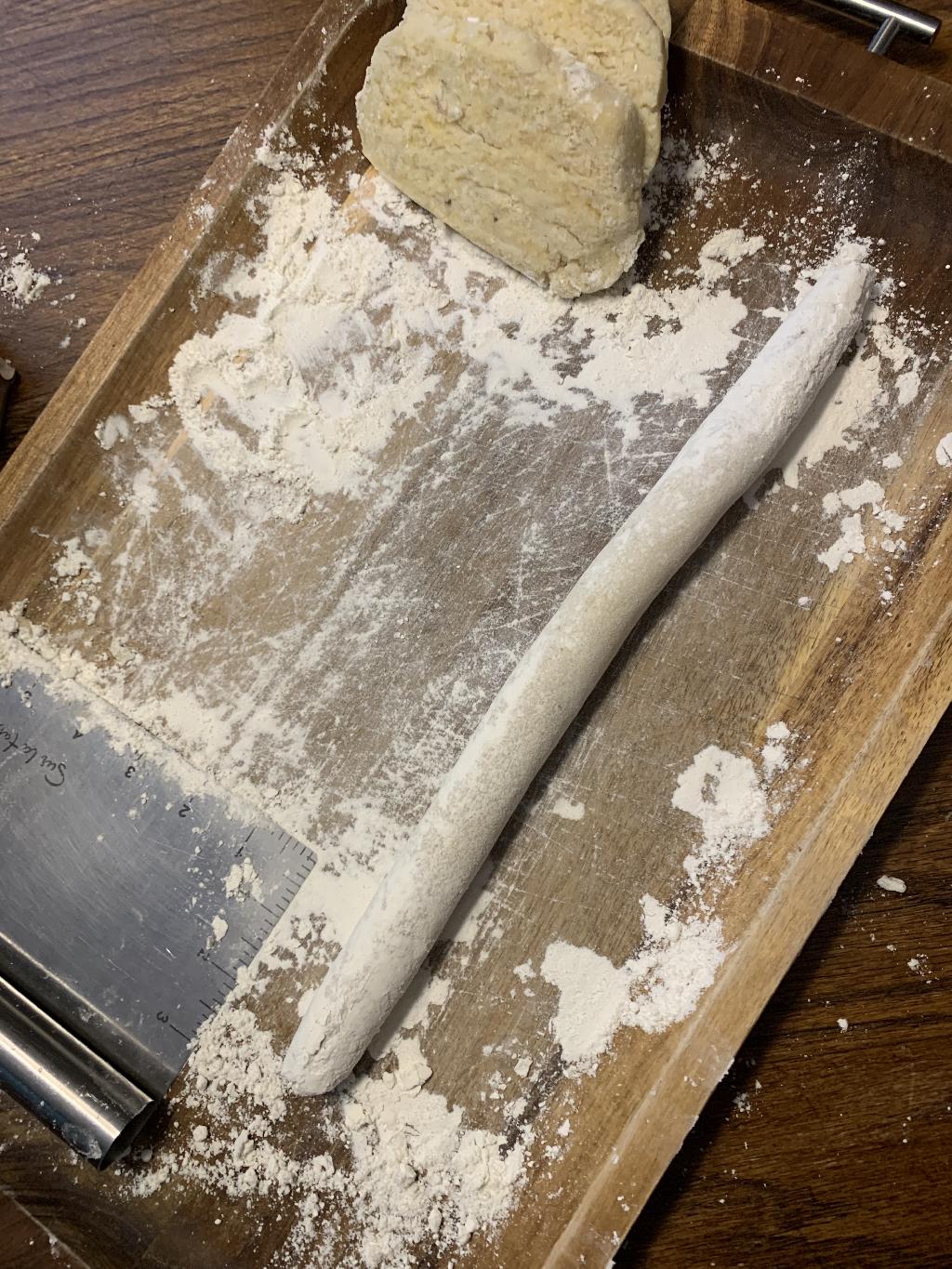
Step #11 Roll each piece out into a long snake like shape, about 3/4 inch thick.
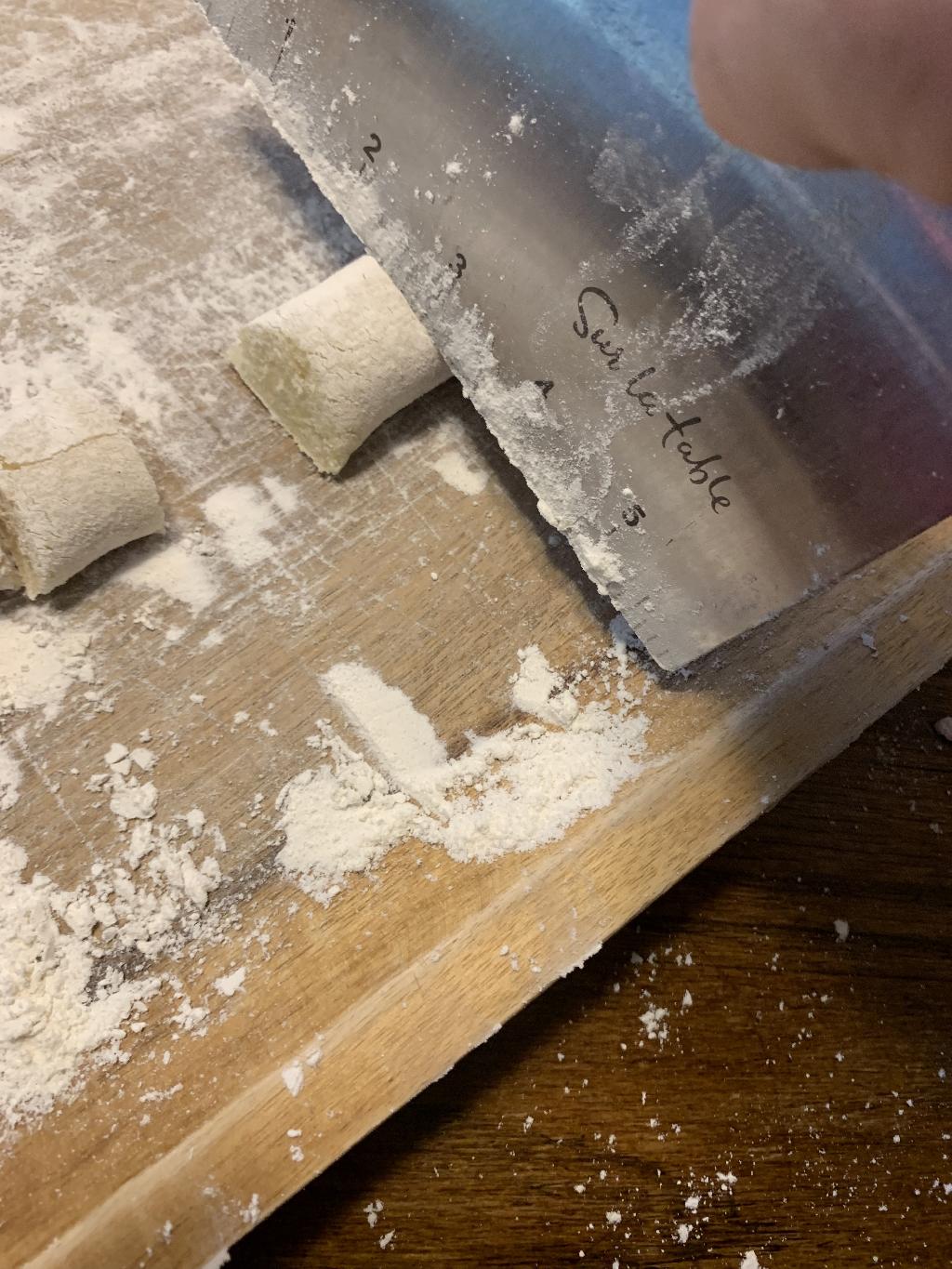
Step #12 Using pasta scrapper or knife again, cut the long piece of dough into smaller, 1/2 inch long pieces.
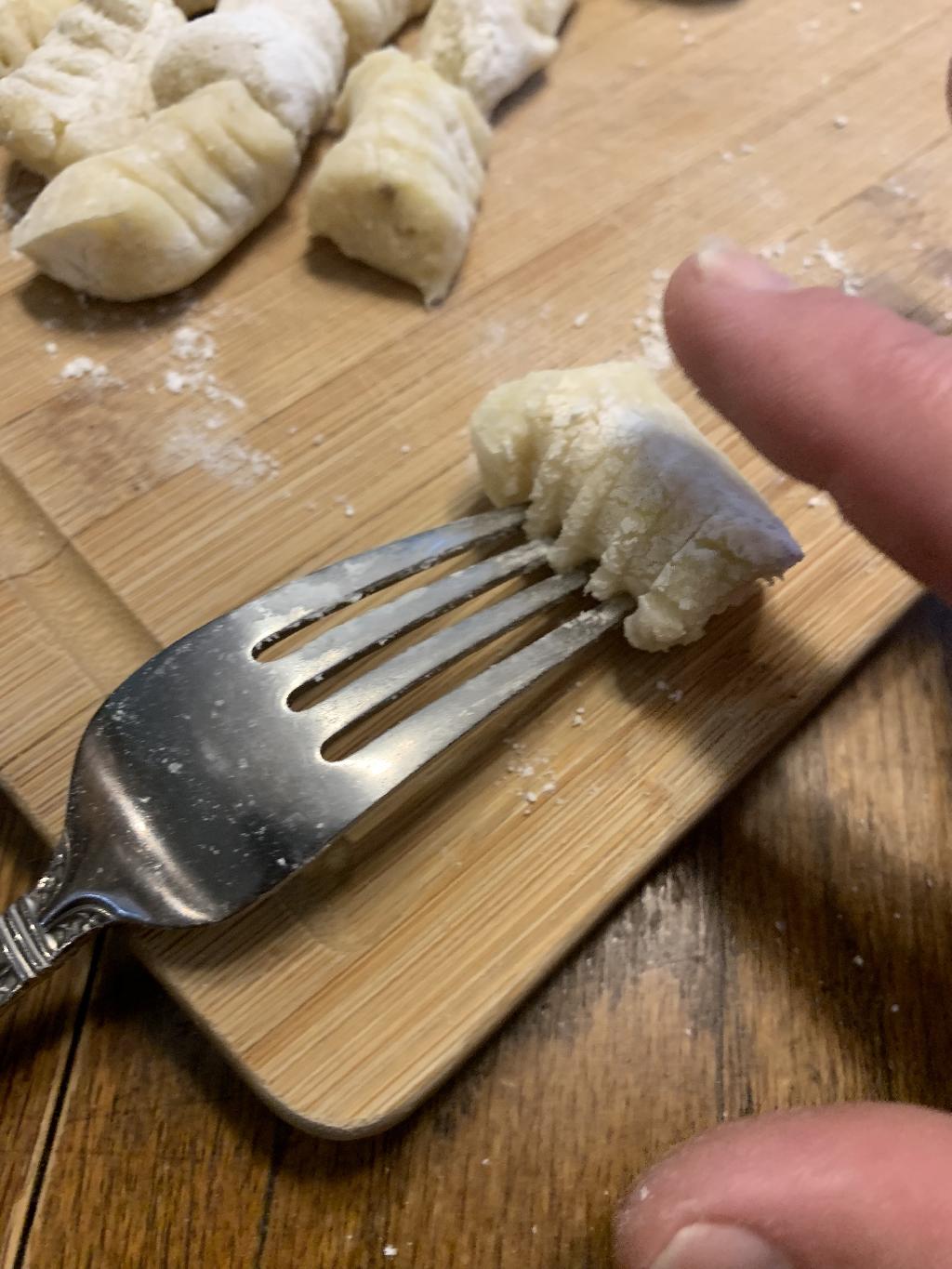
Step #13 It's fine to cook it like it is, but if you want to go for a traditional looking Gnocchi, place the Gnocchi on the back side of a fork and gently row it down to create groves.
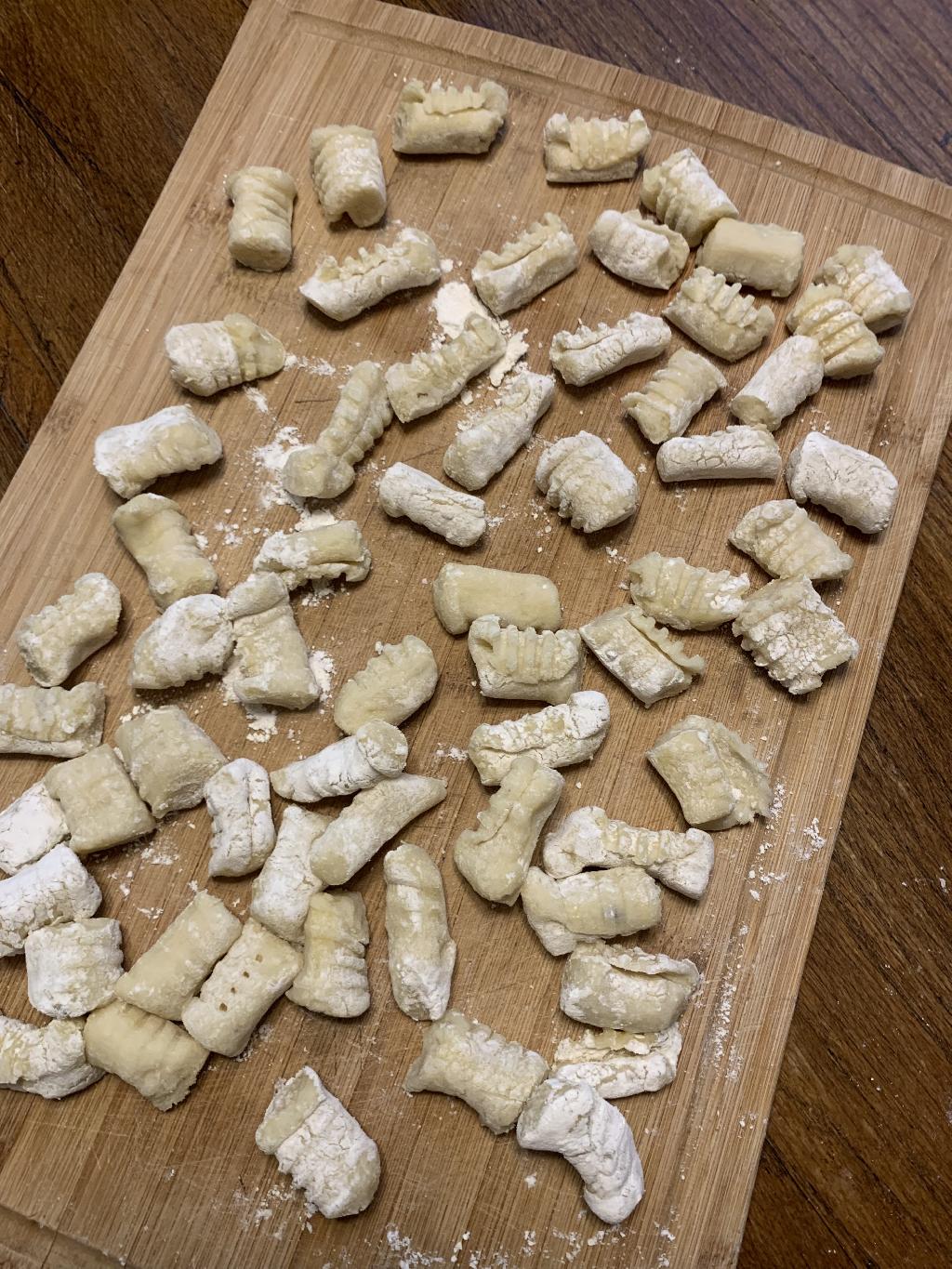
Step #14 Lightly dust the pieces with flour, to prevent them from sticking together.
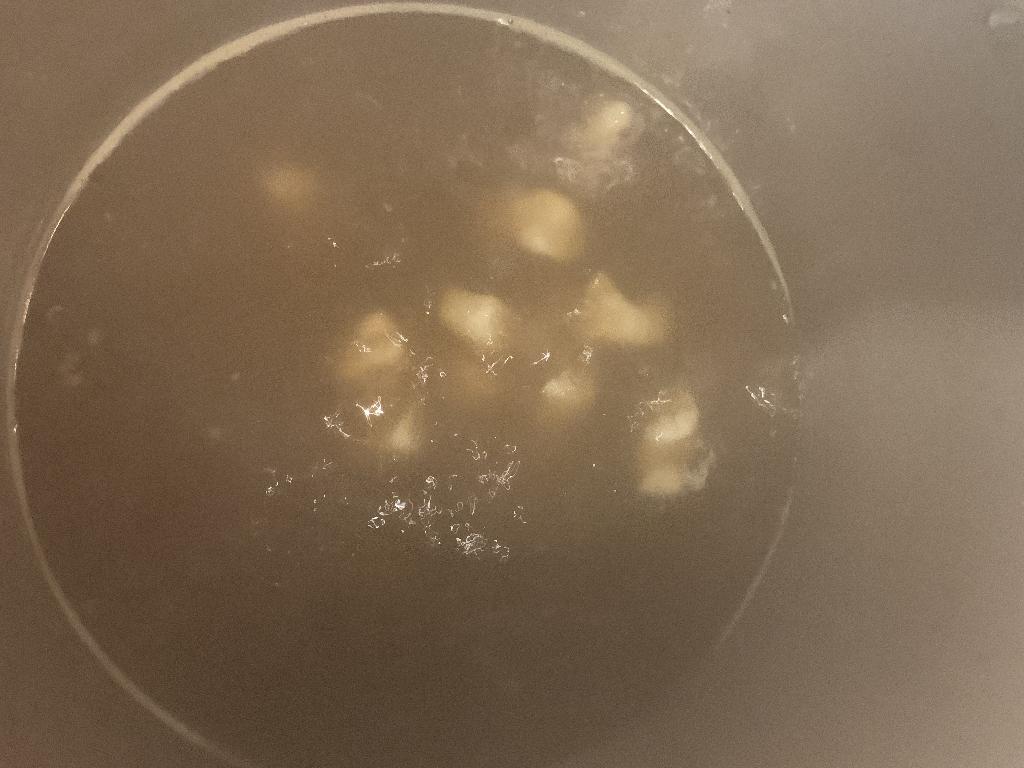
Step #15 Bring Pheasant stock, used to cook Potatoes, back to a boil. Dump Gnocchi in boiling stock and allow to cook for a few minutes. When it floats back to the top, it's time to remove it. Use a spider or slotted spoon to remove to bowl.
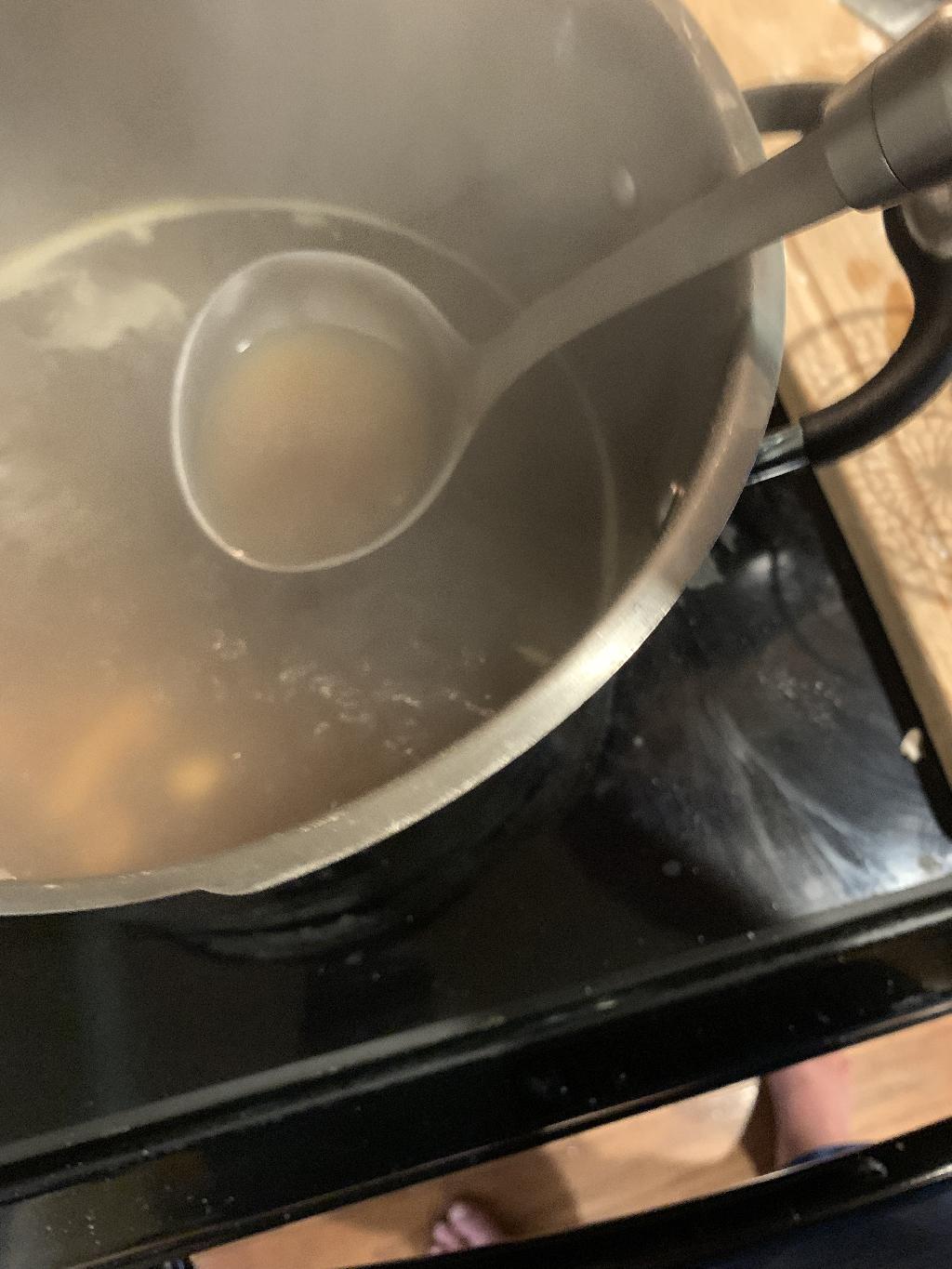
Step #16 Reserve some of the Pheasant stock.
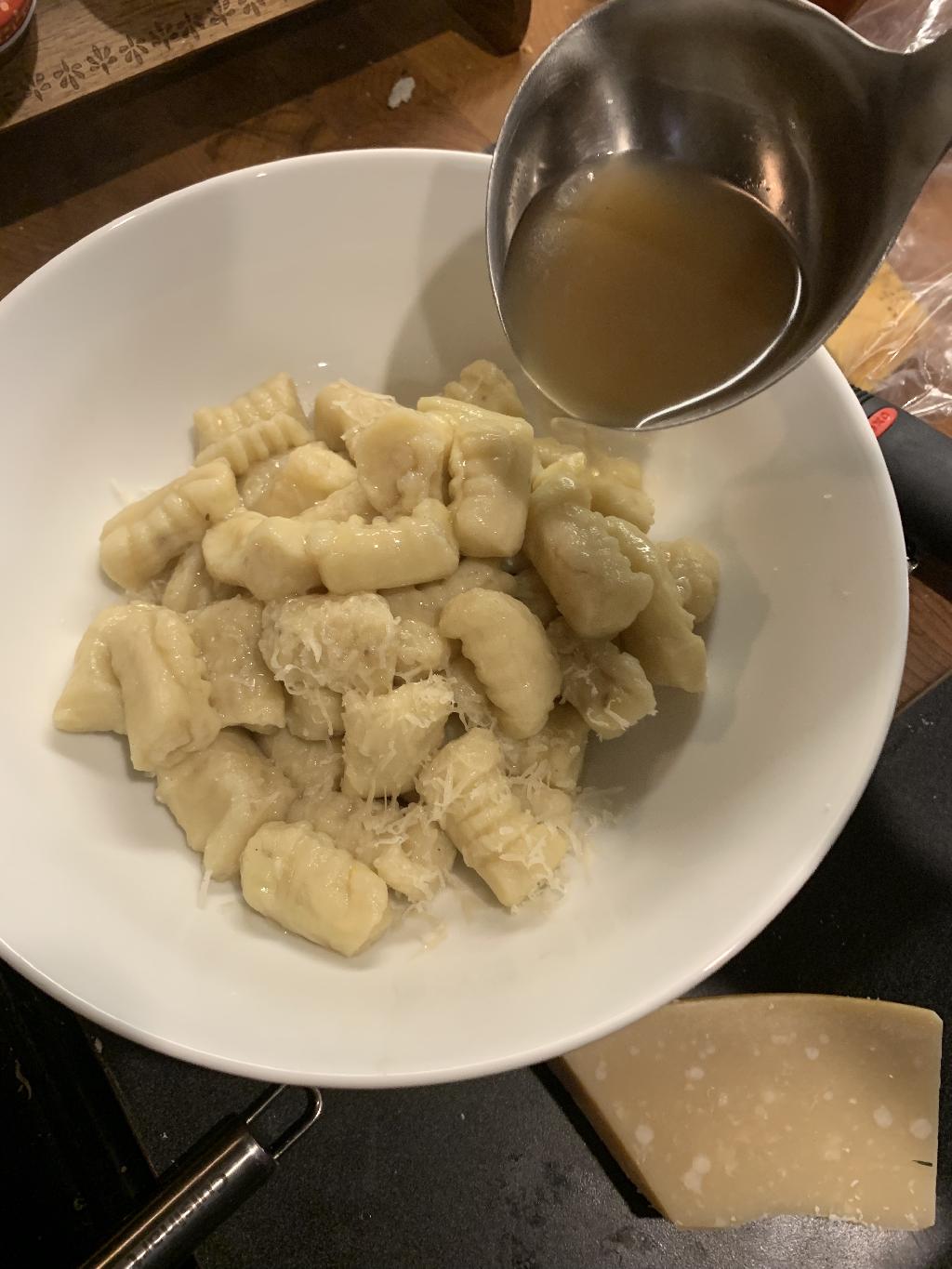
Step #17 When all Gnocchi is done cook. Heat a skillet on medium heat, adding two tablespoons of butter. Allow the butter to melt, then dump the Gnocchi into hot skillet and allow to lightly brown. Remove to serving bowl. Add a little of reserved pheasant stock.
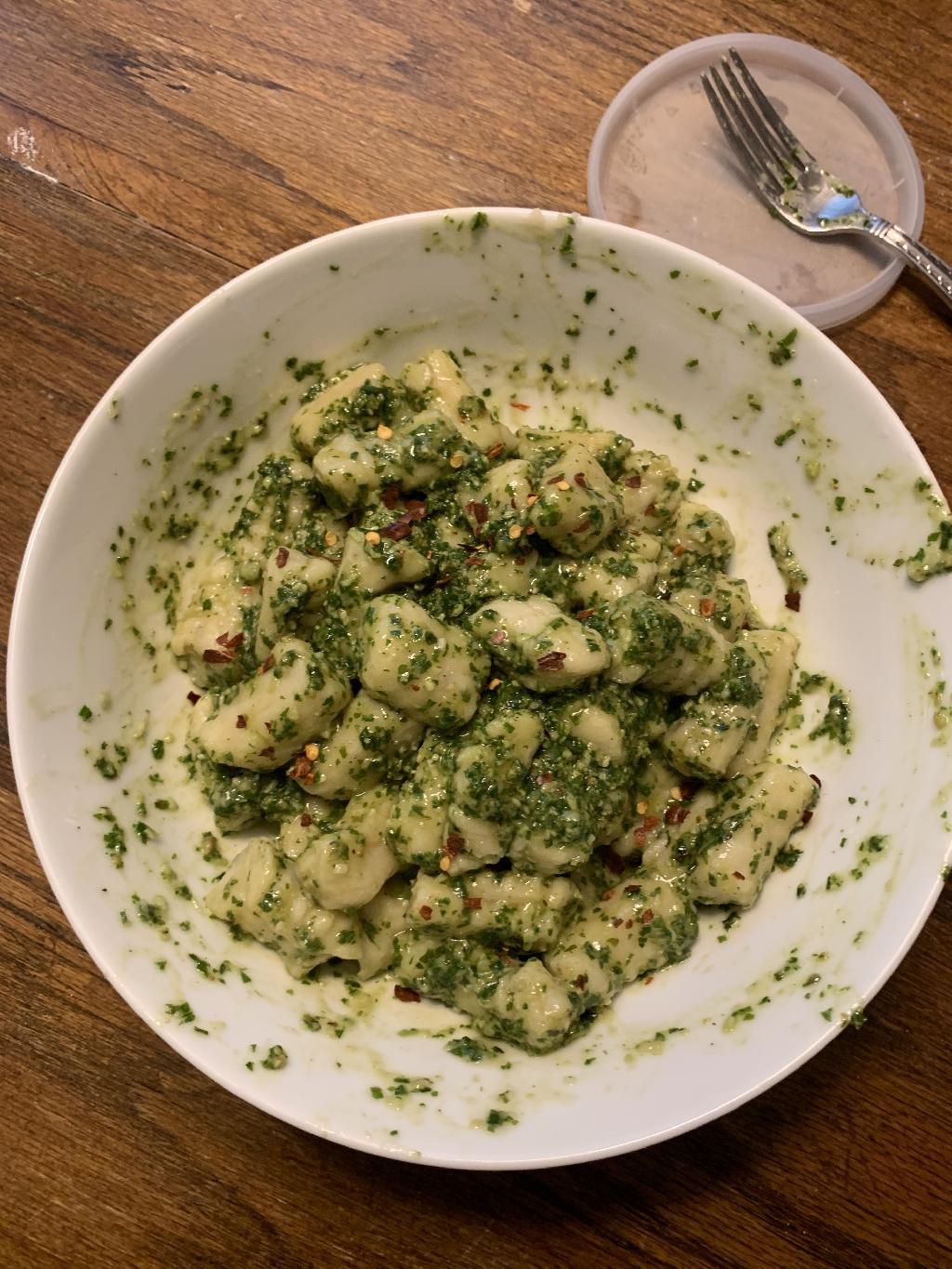
Step #18 Add Basil Pesto and combine.
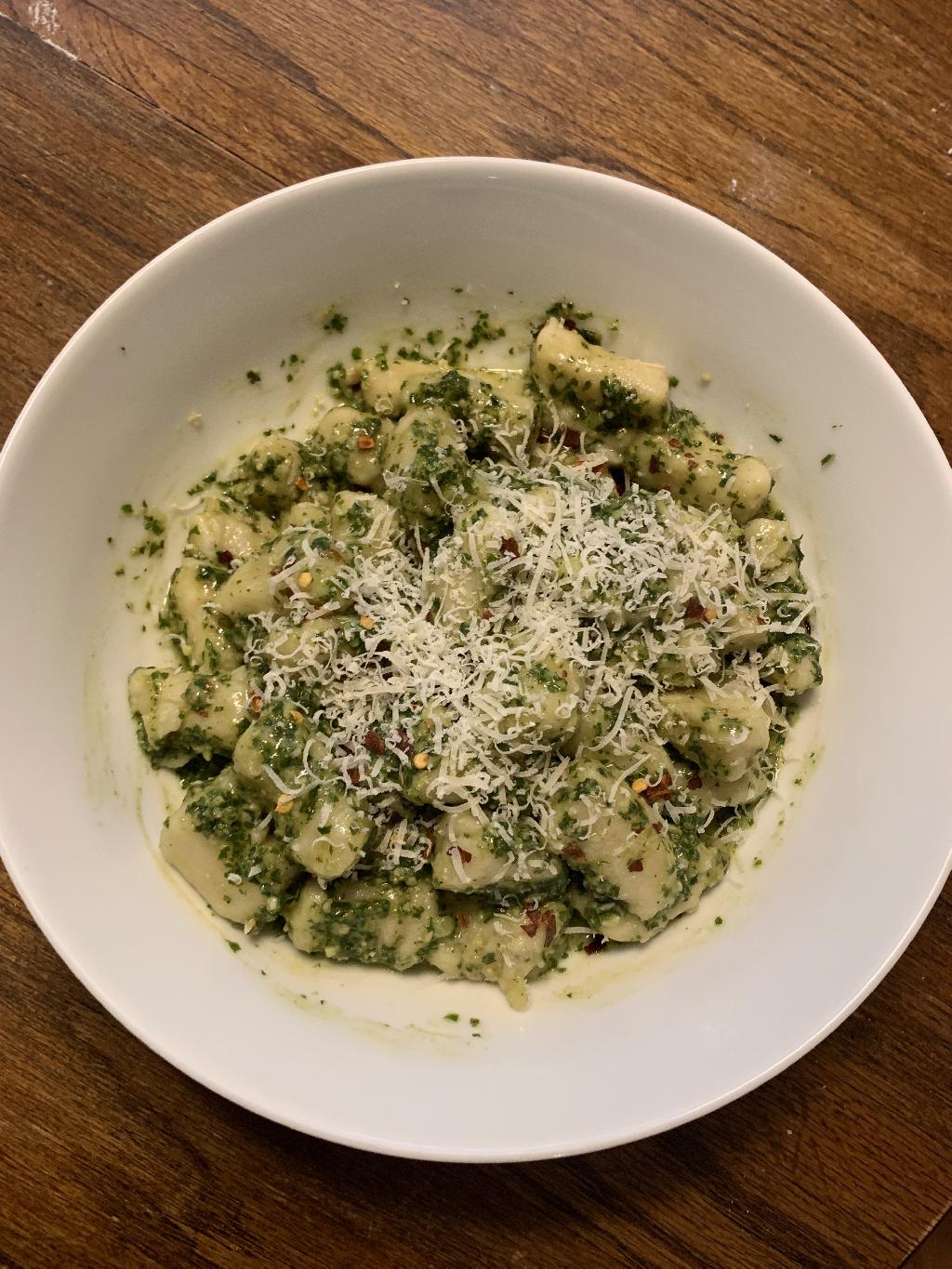
Step #19 Garnish with more freshly grated Parmesan cheese.
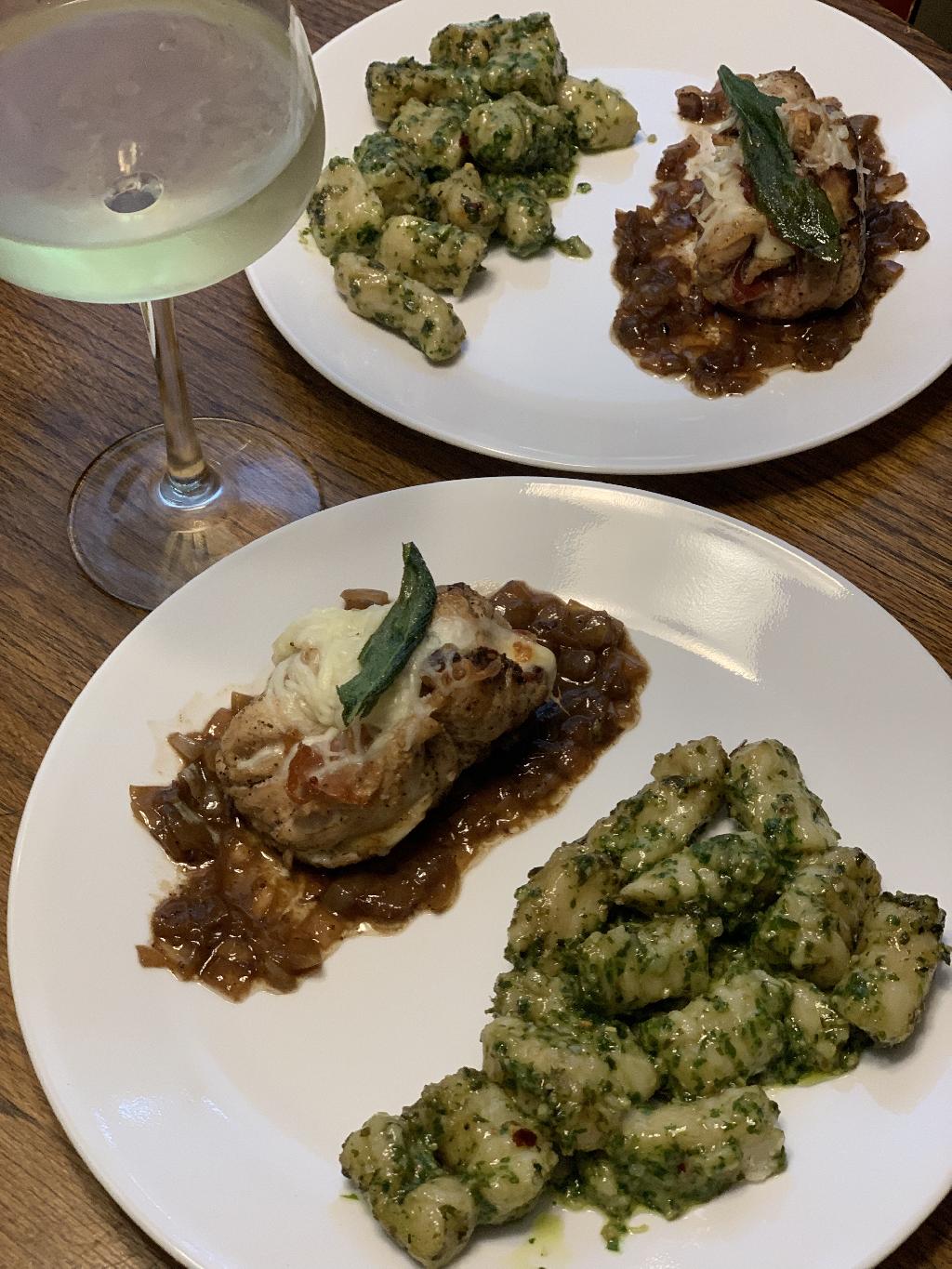
Step #20 To server,aAdd sauce to plate, add Pheasant breast, topped with fried sage leaves.
Recipe Card
Pheasant Saltimbocca with Basil Pesto Gnocchi
Ingredients
Pheasant Marinade
Pheasant Saltimbocca
Basil Pesto
Potato Gnocchi
Instructions
Pheasant Marinade
Pheasant Saltimbocca
Basil Pesto
Potato Gnocchi
About the Author

Jeff Davis
Visit authors websiteYou may think cooking and recipes don’t have much to do with a website dedicated to hunting dogs ... but really, why do we hunt? Sure, we enjoy watching our dogs work in the field and being outdoors, but ultimately, hunting is about survival and feeding our families. We might as well try to do it well. I'm not a chef and definitely no food authority ... but I do like to eat and enjoy cooking. After searching for people willing to share their recipes on Gundog Central, without much success, I decided to try to do a few on my own, with my wife Tami's help. The recipes I share here are things I like to eat and have made here at home. I've tried to include step-by-step instructions with each meal describing exactly how I did it, but my method may not be best, if you decide to try a recipe posted here, please use whatever technique you think works best, I'm simply sharing how I did it. You'll see a lot of recipes where I've tried to make things from starch, when I could have just used store bought ingredients, simply because I wanted to learn how something was done. My goal is to continually update these recipes as I learn new things and techniques. These are my attempts at creating good, home cooked food, that I would like to eat! If I'm sharing it here, my family and I enjoyed it and I believe you will too.


















